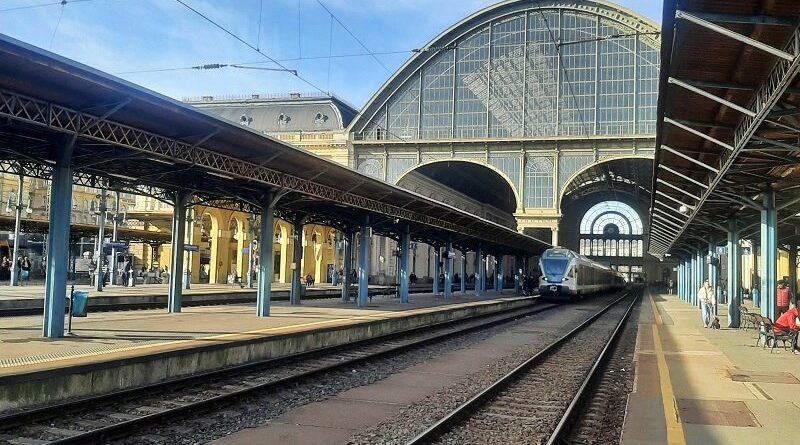This guide provides all the information you need to know about train travel in Hungary, including details about the country’s railway network, international trains, and night trains.
Trains in Hungary
If you want to travel around Hungary, the train is by far the best option to get where you want to go.
Hungarian trains are not only frequent and comfortable but also highly affordable, taking you to nearly every major city, town, and popular tourist attraction in the country.
Train connections to and from the capital of Budapest are excellent, but as you travel deeper into Hungary or between regions, you may notice the varying condition of the railways, as trains tend to be less frequent and the infrastructure much older.
International train connections to and from Hungary are generally excellent, though links to countries in the Balkans can be a bit of a mixed bag.
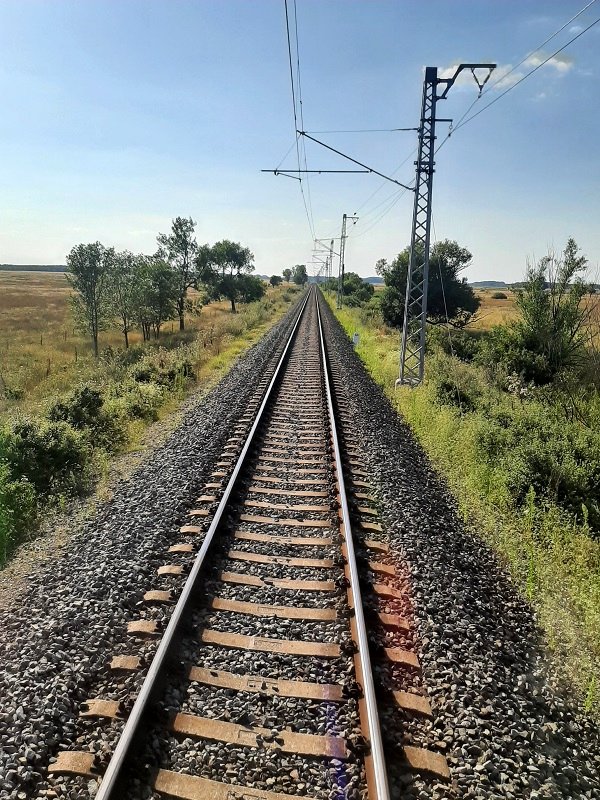
The Hungarian railway network
If all roads lead to Rome, then surely all trains in Hungary go to Budapest, which is at the heart of the Hungarian railway network.
It creates a situation where travelling on one of the main lines between Budapest and a provincial city is a fast journey on a modern train, while a trip on a secondary railway line is slow, with outdated rolling stock traversing crumbling infrastructure.
Indeed, in many cases, travelling via Budapest can be much faster than travelling directly between two regional cities.
For example, the distance between Pécs and Szeged is just 149 kilometres as the crow flies, yet it takes just over six hours to travel by train between these two important Hungarian cities.
If you travel on the most direct railway lines between Pécs and Szeged, you’ll need to change trains four times, whereas somewhat surprisingly, travelling via Budapest — taking a circuitous detour of 410 kilometres — is just as fast as the direct route, as those railway lines allow for much higher speeds and you only need to change trains once.
While in other countries natural barriers such as mountain ranges often contribute to slow speeds and long travel times by train, this is not the case in Hungary, as the country is mostly flat.
Indeed, the only real natural barrier in Hungary is the Danube, although it’s quite telling that there is only one railway bridge across this river outside of Budapest (at Baja).
In Hungary, train travel really is a tale of highly variable railway infrastructure and rolling stock quality, with services on main lines such as Budapest to Debrecen or Budapest to the Austrian border meeting modern standards, while this is not always the case in more remote parts of the country.
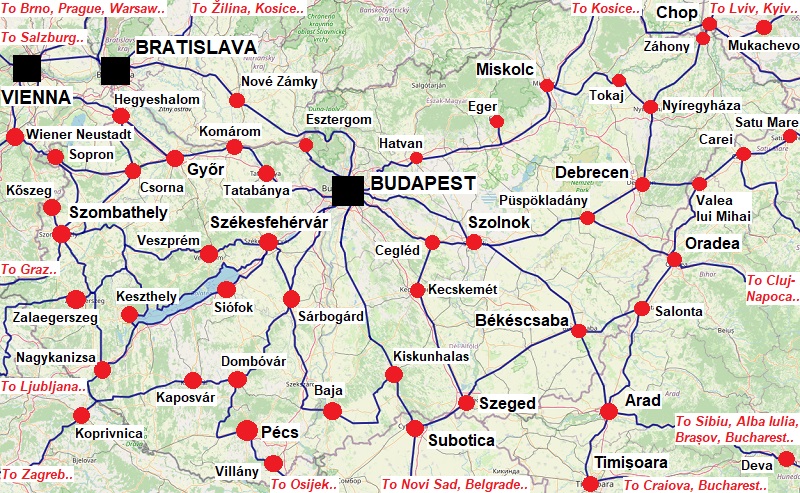
Train operators
MÁV, an abbreviation of Magyar Államvasutak (Hungarian State Railways), is the main operator of passenger trains in Hungary.
In north-western Hungary, most trains are operated by a company known as GYSEV (Győr–Sopron–Ebenfurti Vasút), which is called the Raaberbahn in German, and is actually a joint enterprise of the Hungarian and Austrian states.
All domestic trains in Hungary, whether operated by MÁV or GYSEV, can be booked online through the MÁV website.
MÁV’s website may not be the most modern or user-friendly, but it gets the job done.
After buying your train ticket online, you’ll receive a PDF that can either be printed at home or displayed on your phone to the conductor.
The advantage of buying your ticket online is that you can specify whether you want a window or aisle seat if you’re travelling on a train with compulsory or optional seat reservations.
You can also purchase your ticket at a manned ticket office or machine at stations, or from the conductor on board if you’re departing from a station without these facilities.
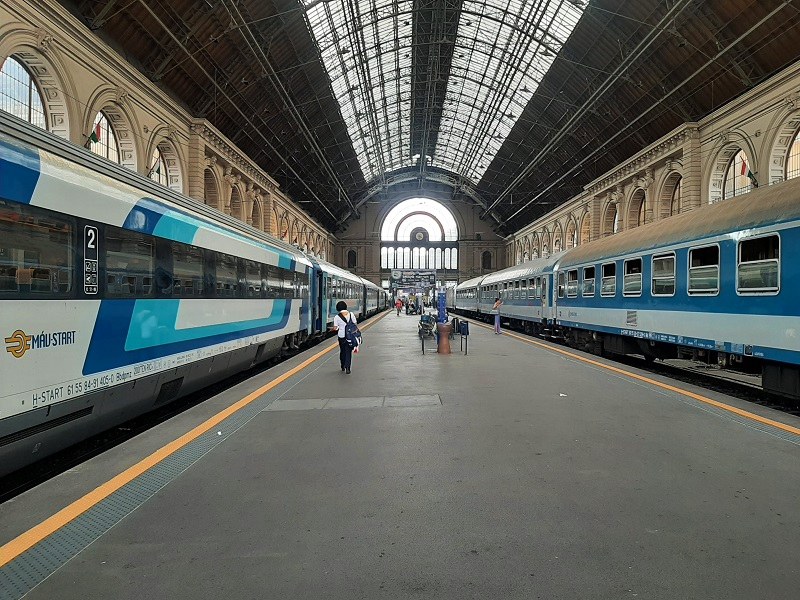
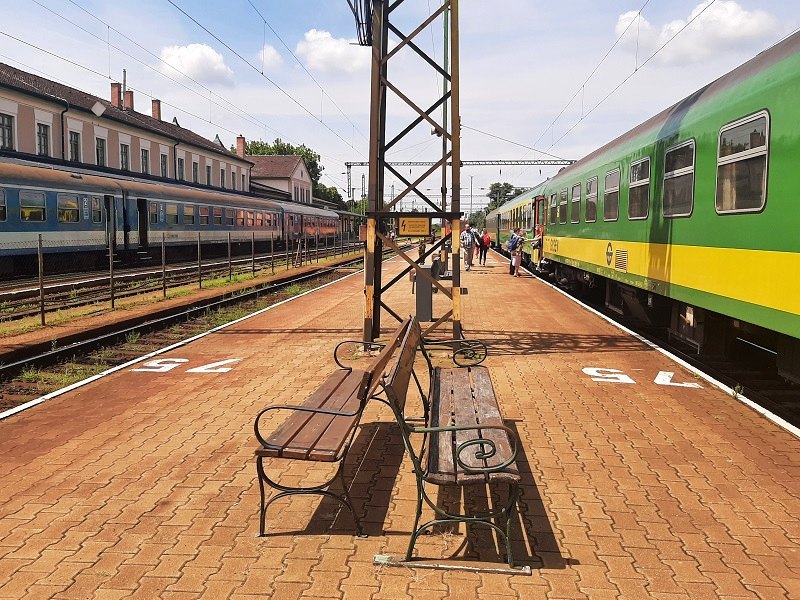
Train types
Trains in Hungary are categorised into several different types, namely:
Railjet Express (RJX): High-speed, premium train linking Budapest with Vienna and beyond.
EuroNight (EN): International night train with sleeper and couchette compartments.
EuroCity (EC): Premium international long-distance train.
InterCity (IC): Premium long-distance train with reserved seats only.
Expressz (Ex): Fast express train.
Gyorsvonat (Gy): Fast express train.
EuroRegio (ER): Semi-fast regional cross-border train service.
InterRegio (IR): Semi-fast interregional train service.
Sebesvonat (S): Semi-fast train, which may stop at every station along part of the route.
Személyvonat (Sz): Passenger train, stops at every station en route.
The higher the train category, the faster the service, the better the rolling stock quality, and the higher the ticket prices generally are.
Railjet Express (RJX), EuroNight (EN), EuroCity (EC), and InterCity (IC) trains have variable prices and are cheaper when booked in advance, while all other train types have a fixed, distance-based price, meaning they cost the same whether you book in advance or buy your ticket on the day of travel.
When travelling solely within Hungary, Railjet Express (RJX), EuroCity (EC), and InterCity (IC) trains require a compulsory seat reservation in addition to your ticket, whereas for international trains, it depends on the specific train connection whether it’s mandatory or optional.
A seat reservation for these trains will be automatically included with your ticket when you book it online or purchase it at the station.
On lower category trains, you can simply take any available seat you want.
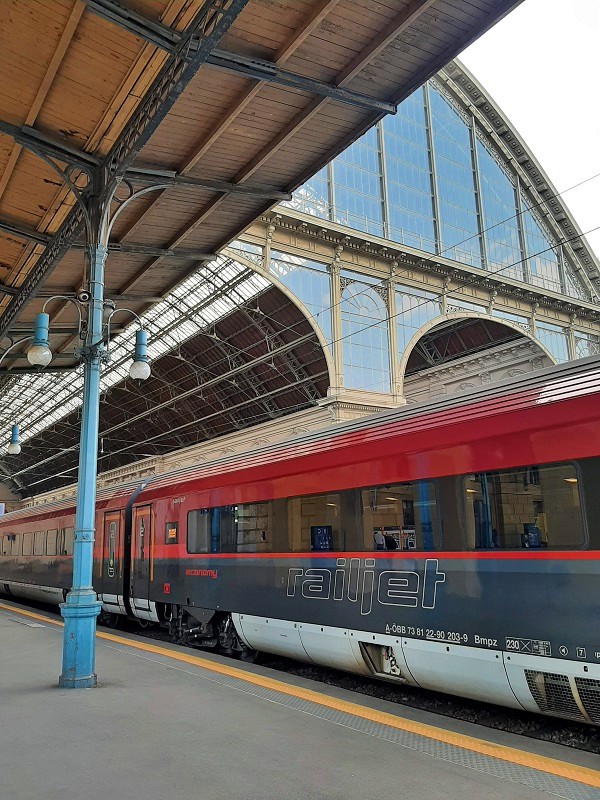
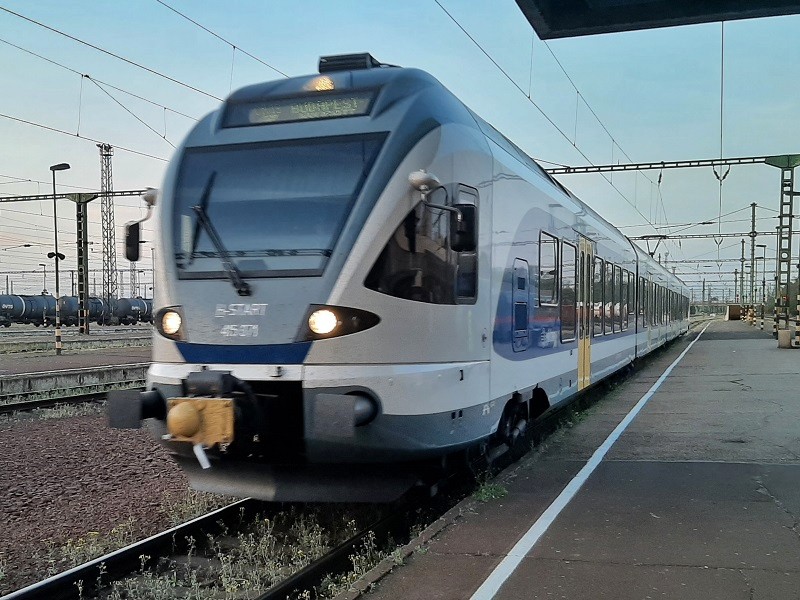
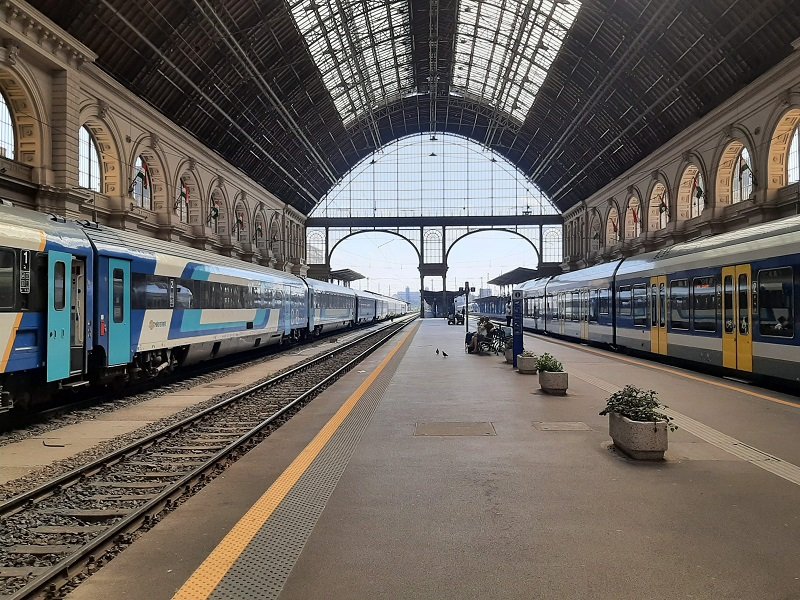
Same train, different coaches
It is common in Hungary for a single train service to carry coaches of different train types.
For example, many trains linking Budapest with provincial cities such as Szeged or Békéscsaba carry both InterCity (IC) and Gyorsvonat (Gy) coaches.
Obviously, in such a situation, there is no difference in travel time, only in comfort and price.
With a standard train ticket, you can only sit in the more basic, unreserved Gyorsvonat-classified coaches, while an InterCity ticket with an additional seat reservation allows you to sit in the more premium InterCity coaches on the same train, which offer more comfortable seats, a quieter environment, and amenities such as power sockets and Wi-Fi internet.
When you book your ticket online on the MÁV website, you will often see the same train departure listed twice, with one option offering a ticket for the Gyorsvonat coaches and the other for the InterCity coaches with a reserved seat.
A full-price, fully flexible InterCity ticket is more expensive than a Gyorsvonat ticket for the same distance, but advance InterCity fares are often cheaper.
However, these advance InterCity fares are usually only valid for a specific train departure, whereas fixed-price Gyorsvonat tickets are always flexible as they can be used on any service within the ticket’s validity period.
Note that Gyorsvonat coaches are always second class, while domestic Hungarian InterCity services typically have both first and second class coaches.
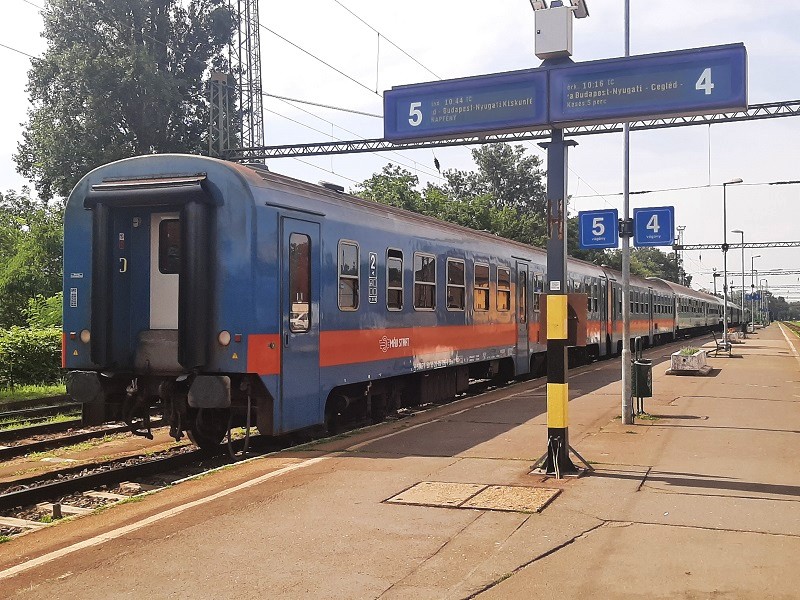
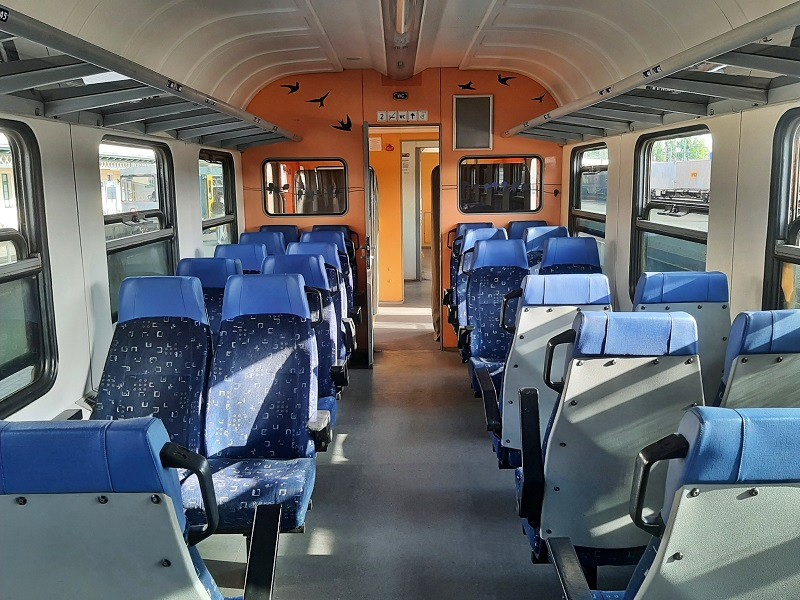
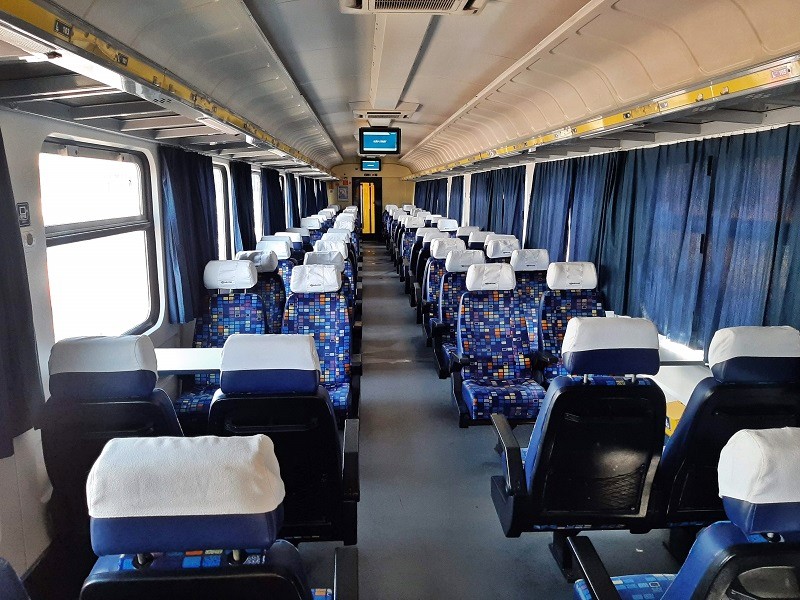
IC+
On some InterCity train services in Hungary, you will also find modern IC+ coaches, offering better quality service and more comfortable seats in both first and second class.
Theses trains also have a small bistro counter where you can buy snacks and drinks.
What sets the IC+ train service apart from an ordinary InterCity service are the premium first-class seats, comfortable leather chairs with fold-out tables in quiet four-seat compartments.
By showing your premium first class ticket, you also receive a free hot drink from the bistro counter and get complimentary access to MÁV’s first class lounge at Budapest Keleti station before your train’s departure.
These premium first class seats, which must be reserved in advance just like those in any other travel class on InterCity trains, naturally command a premium above a standard first class ticket.
You can currently find IC+ coaches and premium first class seats on the Budapest-Pécs, Budapest-Szeged, Budapest-Debrecen-Záhony, and the circular Budapest-Miskolc-Tokaj-Debrecen-Budapest routes.
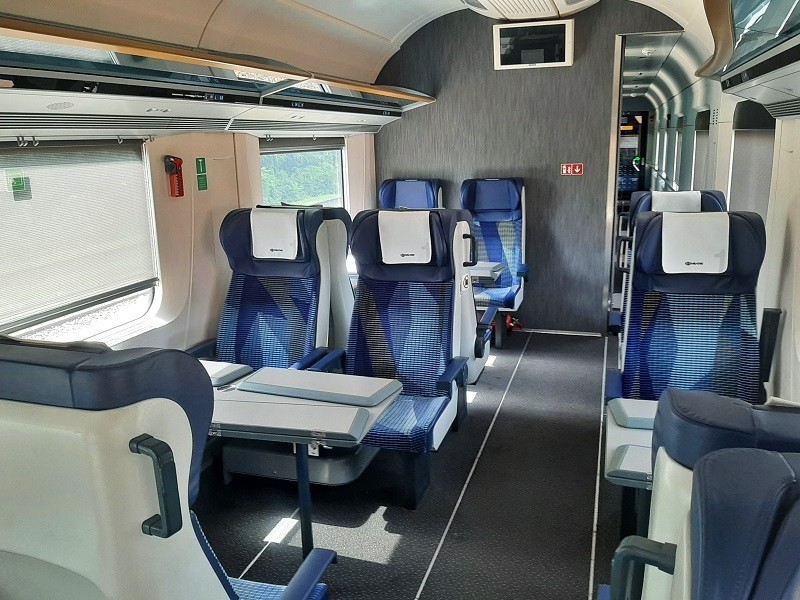
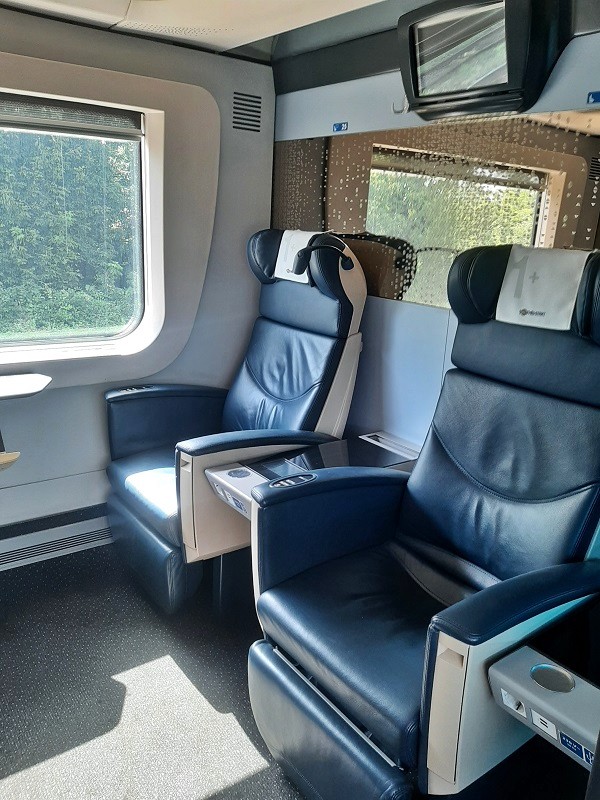
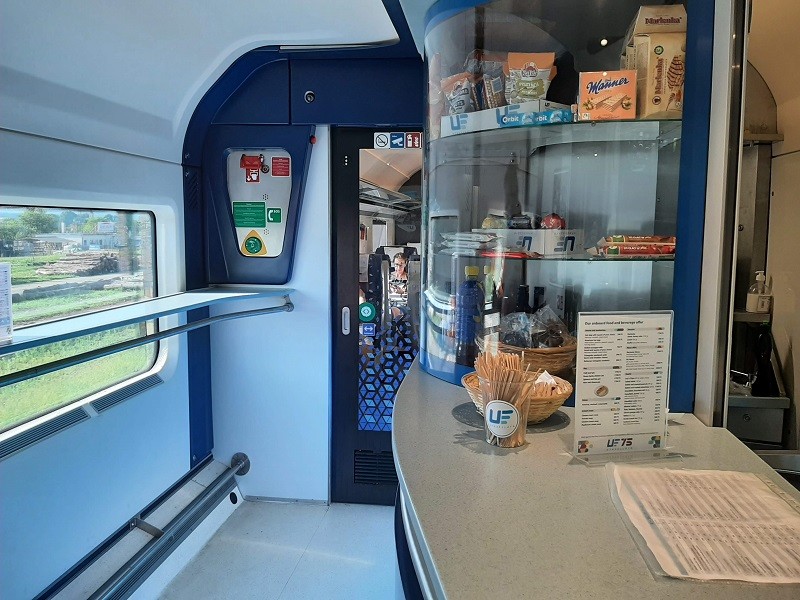
Ticket prices
Train tickets in Hungary are affordably priced, and for the average tourist, even a first-class ticket on an InterCity train is unlikely to make much of a dent in their travel budget.
Remember that tickets for Railjet Express (RJX), EuroCity (EC), and InterCity (IC) trains, as well as sleeper trains (EN), are cheapest when bought in advance, while all other trains have a fixed, distance-based price, with no difference whether you buy them a month ahead or on the day of travel.
The typical train ticket prices for the 235-kilometre (146 miles) railway route between Budapest and Pécs are 4,940 HUF (€11.90) for the most expensive 2nd class ticket on an InterCity train, 5,940 HUF (€14.35) for first class on the InterCity train, or 3,410 HUF (€8.25) for travel in a 2nd class Gyorsvonat coach with unreserved seating.
A great benefit of train travel in Hungary is that all passengers aged 65 or older, as well as children aged 13 or younger, can travel for free on domestic train services, regardless of their nationality.
Teenagers and young adults aged 14 to 24 are eligible for a 50% discount on their train tickets.
When booking your ticket on the MÁV website, you must enter your age, and the discount will be applied automatically to the ticket price.
When buying your ticket at a Hungarian station, remember to inform the ticket clerk if you are 24 or younger or 65 or older to receive your discount or free train ticket.
Note that you will need to present a valid identification card, such as a passport or European ID card, to prove your age when the train guard checks tickets.
If you’re entitled to a free ticket, remember that you still need a seat reservation on Railjet, EuroCity, and InterCity trains in Hungary, though you can board any lower-category train without a ticket as these do not require reservations.
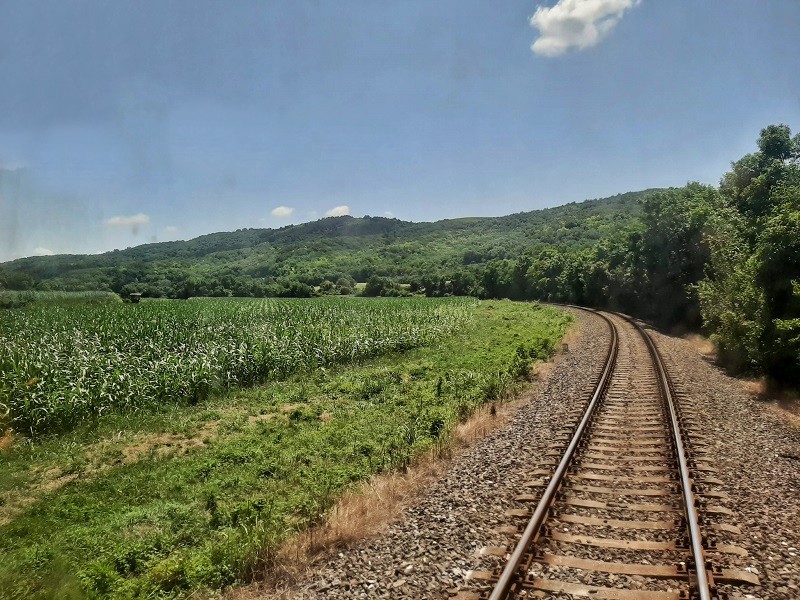
How are Hungarian trains like
The great majority of trains in Hungary are locomotive-hauled, although electric multiple units (EMU), diesel multiple units (DMU), and railcars are also used.
There is a great variety in quality on Hungarian trains, and it makes a big difference whether you travel on a higher-category train on one of the main railway lines or on a lower-category train in a remote part of the country.
When you travel on Railjet, EuroCity, and InterCity services in Hungary, you’ll find that these trains are fully air-conditioned and generally offer plenty of comfort and modern amenities, such as power sockets and Wi-Fi.
With lower-category trains, on-board quality can vary greatly, as some regional and local services in Hungary are operated by brand-new trains, while others rely on ancient railcars from the late 1970s with poor ride quality.
Although everyday commuters might think differently, such old trains can be fun to ride from a tourist’s perspective, and on the plus side, they often have opening windows where you can lean out for some fresh air and great views.
Regardless of the train category, Hungarian trains are generally quite clean, including the toilets on board, and even the older rolling stock is usually well-maintained.
Seats on Hungarian trains are either in open plan saloon cars, or in coaches with compartment-style seating.
If your train has seating in open plan saloon cars, you will find that second class has two abreast seating on either side of the aisle, while the seats in first class are in a more spacious 1+2 configuration.
On trains with side compartments, there are six seats per compartment in both second and first class, while premium first class on IC+ trains features four seats per compartment.
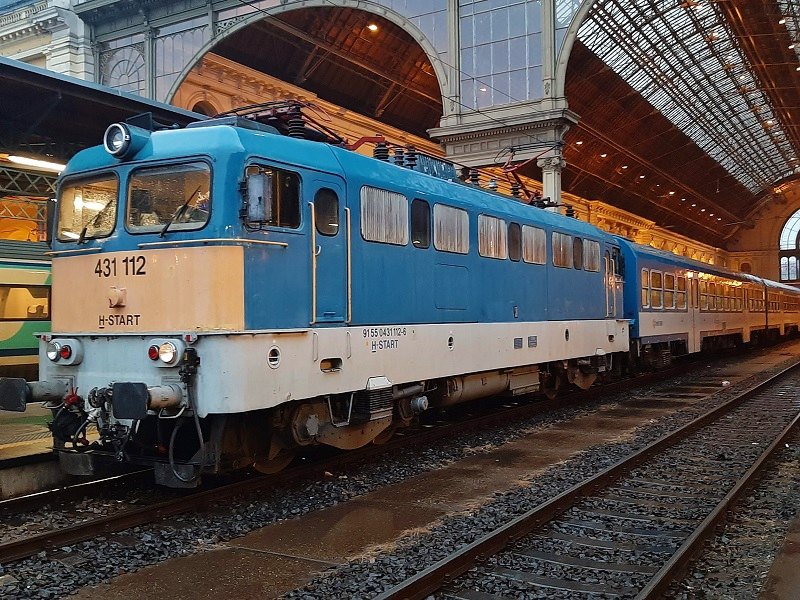
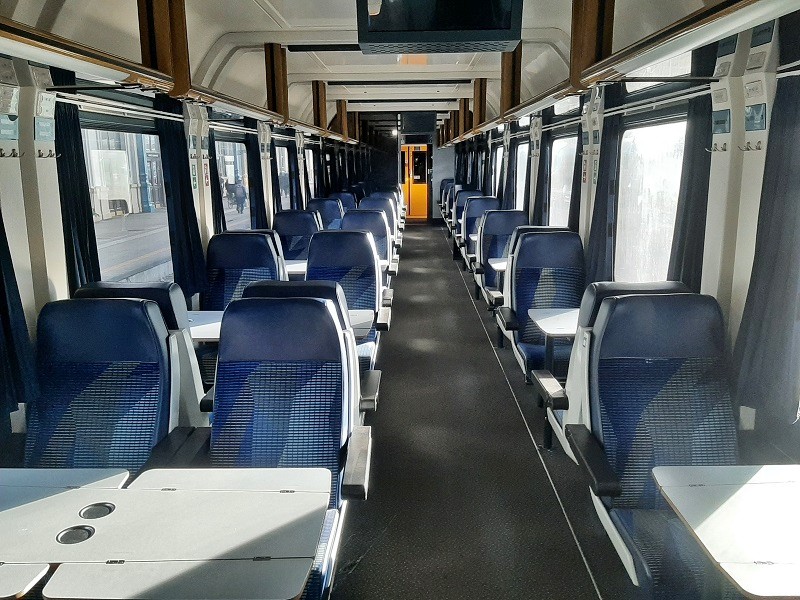
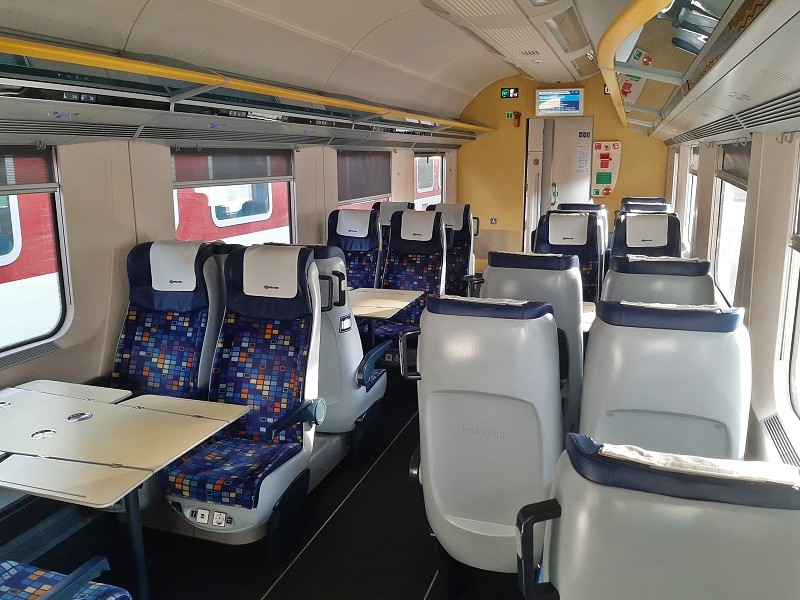
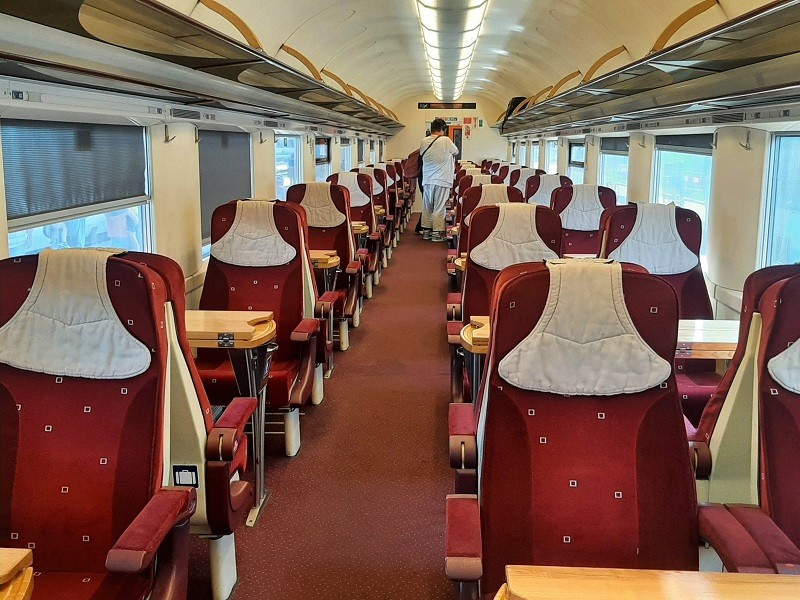
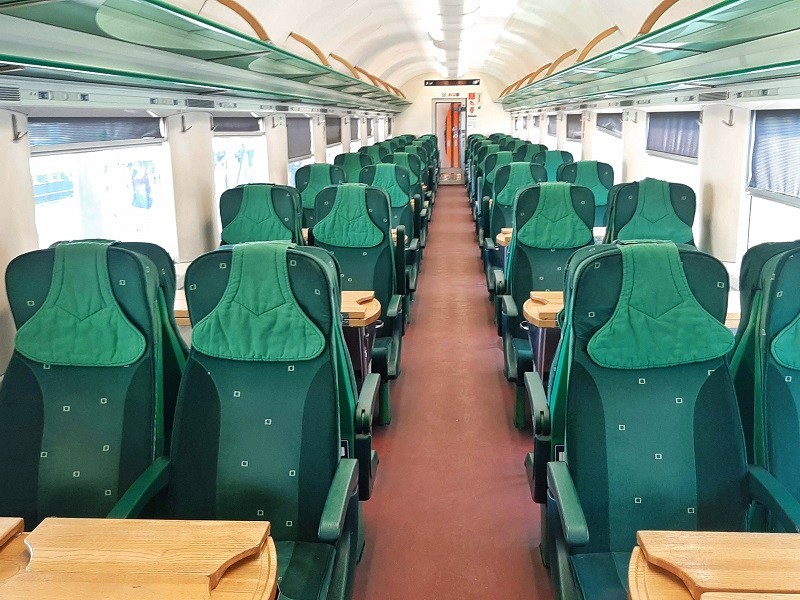
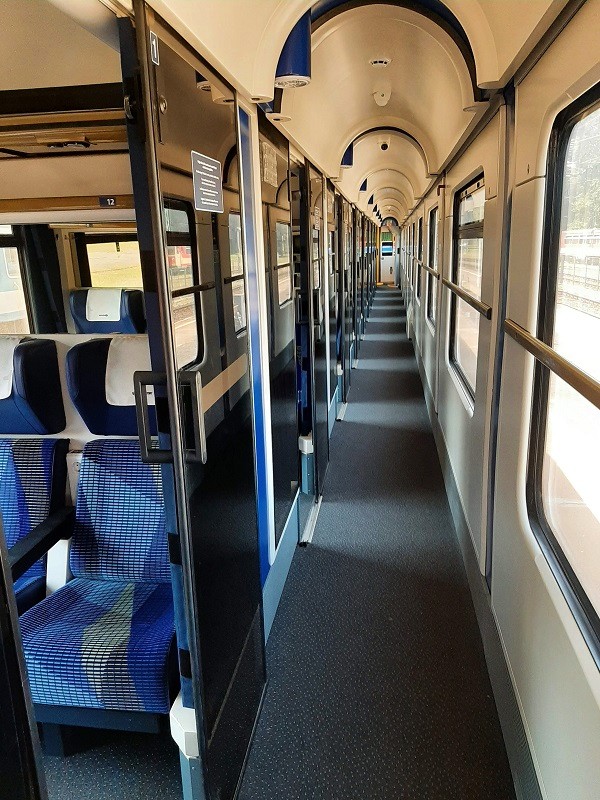

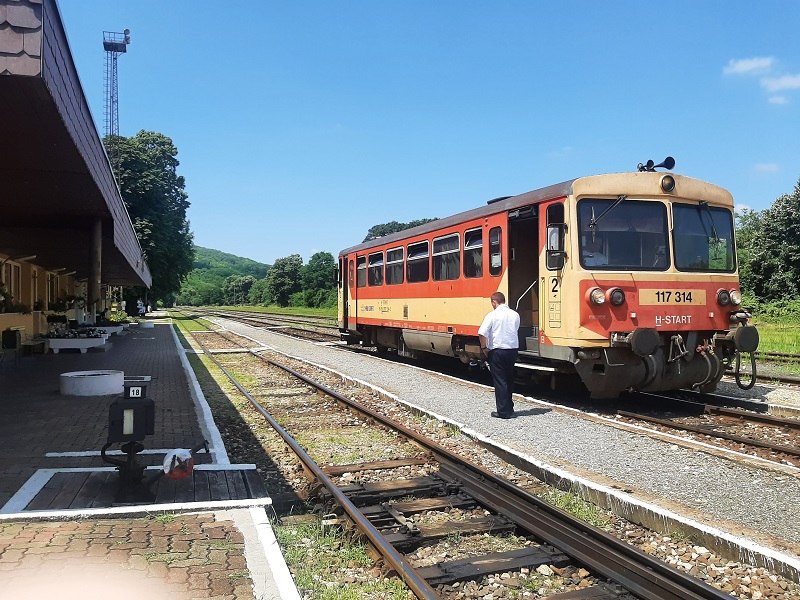
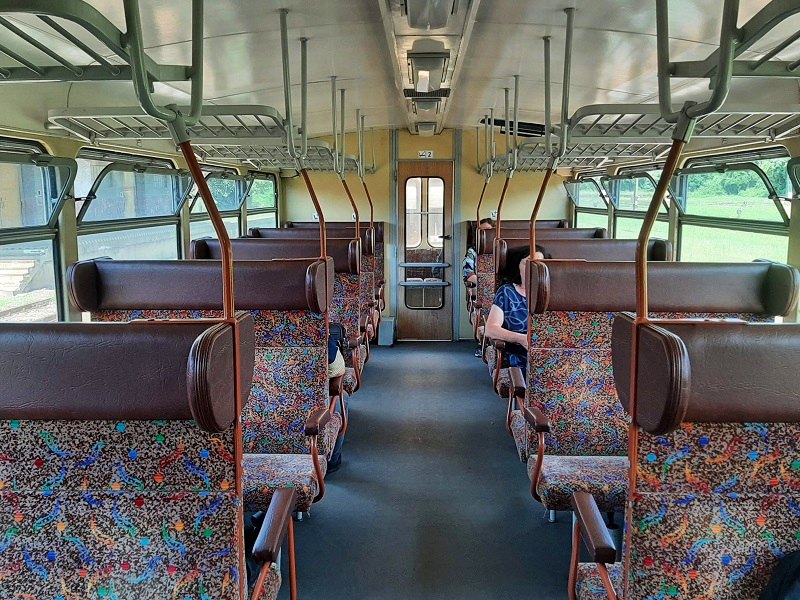
Dining cars on Hungarian trains
One of the great delights of train travel in Hungary is sitting in the dining car to enjoy excellent, freshly cooked Hungarian food while the scenery passes by outside the window.
Hungarian dining cars, operated by MÁV’s catering division Utasellátó, offer affordable meals and drinks, including draught beer and high-quality local wine.
Even a three-course dinner for two, including a bottle of wine, costs no more than 50 euros.
Besides the quality food and drinks, some of these Hungarian restaurant wagons are among the most beautiful dining cars you’ll find on European railway tracks, with a charm that evokes the glory days of rail travel.
You’ll find these dining cars attached to some of the most important international EuroCity trains, namely those from Budapest to Warsaw, Budapest to Hamburg (via Bratislava, Prague, and Berlin), Budapest to Baia Mare, and Budapest to Vienna.
The ‘Corona’ night train from Budapest to Brașov, as well as the seasonal ‘Adria’ night train from Budapest to Split, also feature a Hungarian dining car for the entire duration of the journey.
During the high summer season, some domestic Hungarian InterCity trains from Budapest to Keszthely along the southern shore of Lake Balaton also feature a proper dining car.
In these Hungarian dining cars, you can pay by card or with cash in Hungarian forints, euros, or the local currencies of the countries the train passes through.
Dining cars are also available on Railjet Express trains between Budapest, Vienna, Munich, and Zurich, as well as on EuroCity ‘Metropolitan’ trains from Budapest to Bratislava and Prague, though these are operated by the Austrian and Czech railways respectively.
On domestic Hungarian InterCity Plus (IC+) trains, you’ll find a bistro counter where you can buy basic snacks and drinks.
Of course, you can also bring your own food and drinks on board Hungarian trains for consumption at your own seat or in your own compartment.
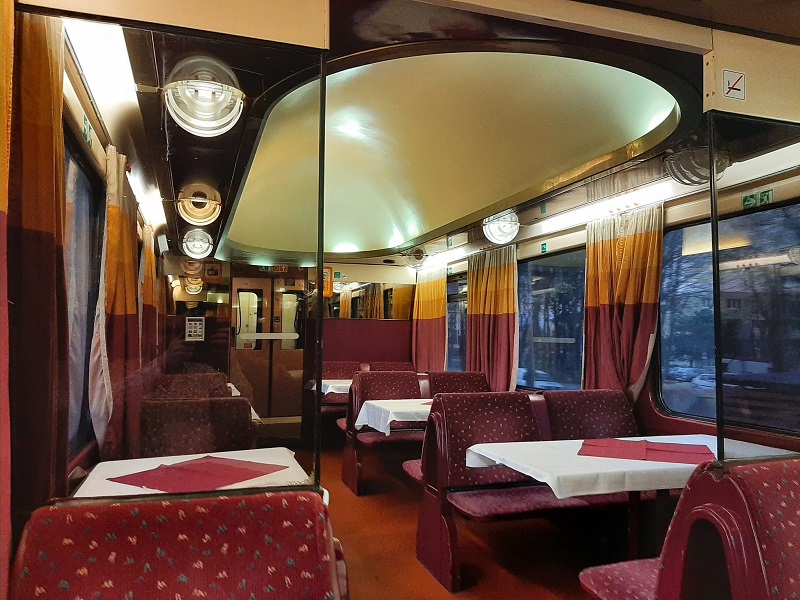
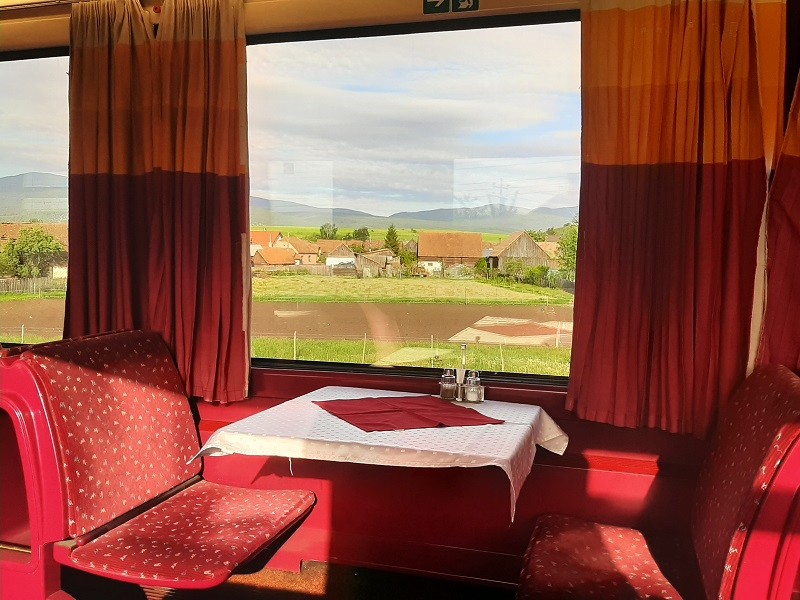
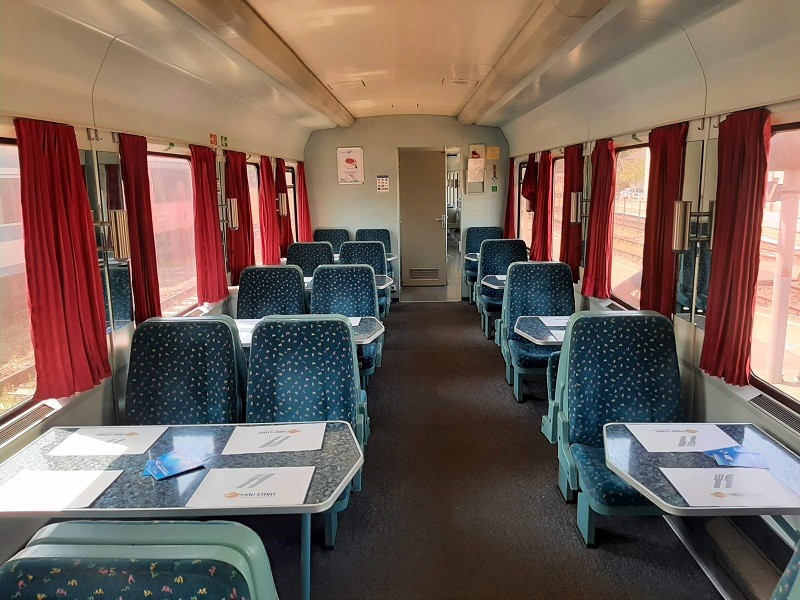

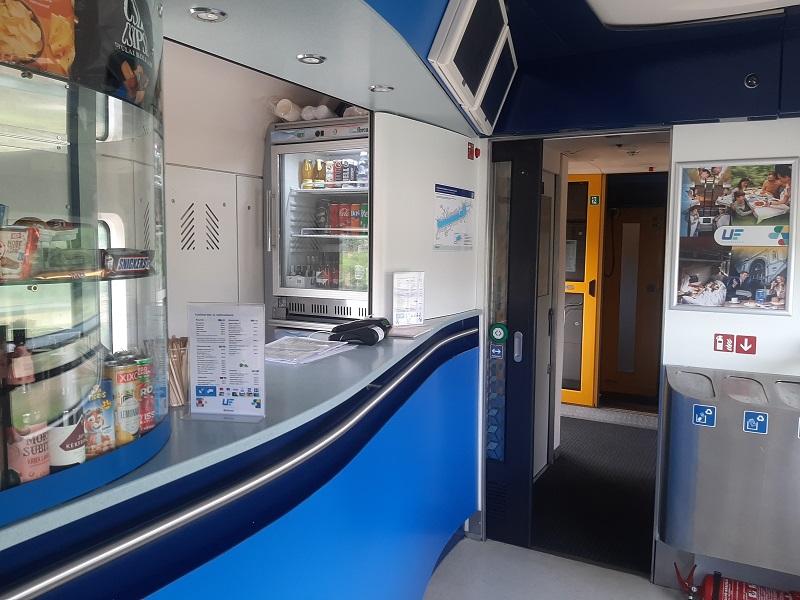
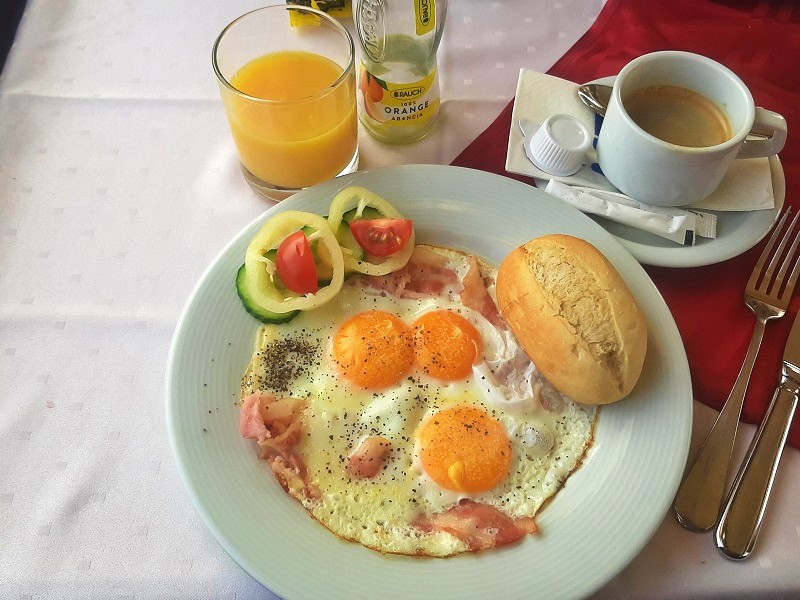
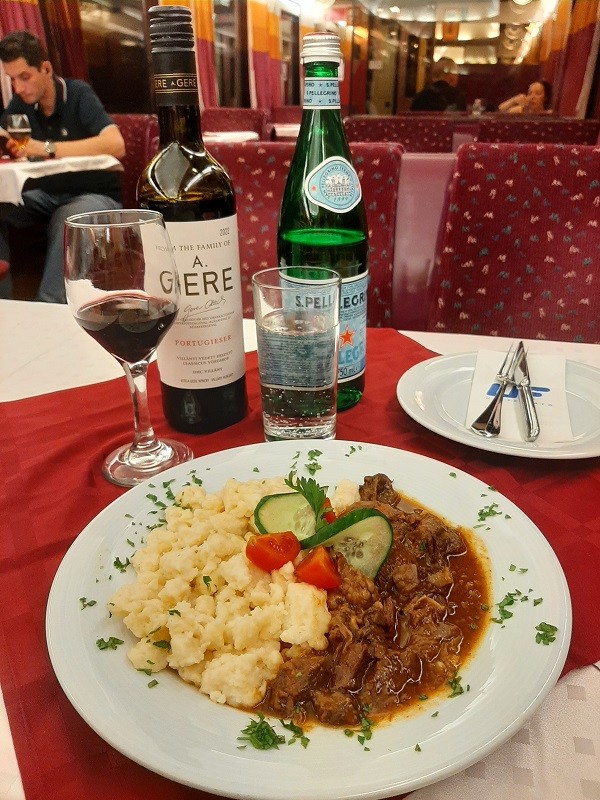
How are Hungarian night trains like
Although Hungary is too small for domestic night trains, the Hungarian Railways (MÁV) operates several international sleeper trains from Budapest, which offer a convenient way to travel to or from the country.
These Hungarian sleeper trains are comparable in quality to those in other European countries, typically offering berths in shared 6-berth and 4-berth couchette compartments, as well as in sleeper compartments that can be booked as triple (3-bed compartment), double (2-bed compartment), or single for private occupancy.
Some night train services also have standard 2nd class coaches with seats in 6-seat compartments, although spending the night in a normal seat is not recommended for overnight journeys.
Sleeper compartments always feature a washbasin and nightstand, amenities that are not available in couchette compartments.
There are no en-suite sleeper compartments on Hungarian night trains, so whether you’re in a couchette or sleeper, you’ll need to use the shared toilets at the far end of each coach.
Hungarian night trains branded as ‘EuroNight’ services, such as those from Budapest to Zurich, Munich, Stuttgart, and Berlin, typically use more modern couchette and sleeper coaches than those found on InterCity-branded services, such as the night train routes to Brașov and Rijeka.
However, the older night train coaches used by MÁV are just as comfortable as the newer ones, pack more charm, and have the added benefit of windows that can fully open.
When you book a sleeper, breakfast is included in the morning, either as a light meal delivered in a box to your compartment or, if your train has a dining car, a voucher for a complimentary cooked breakfast.
In the overview below of international train links to and from Hungary, you’ll find all the routes of Hungarian night trains, as well as those of sleeper trains operated by foreign railway companies.
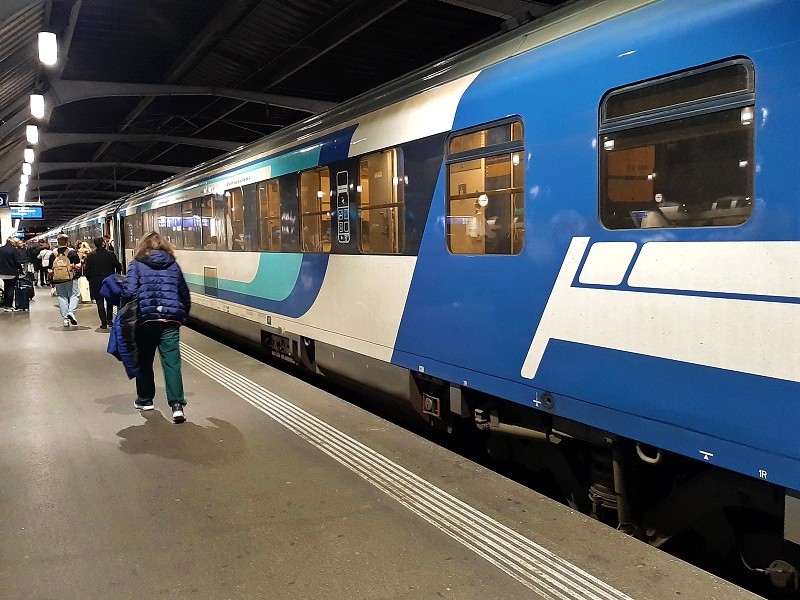
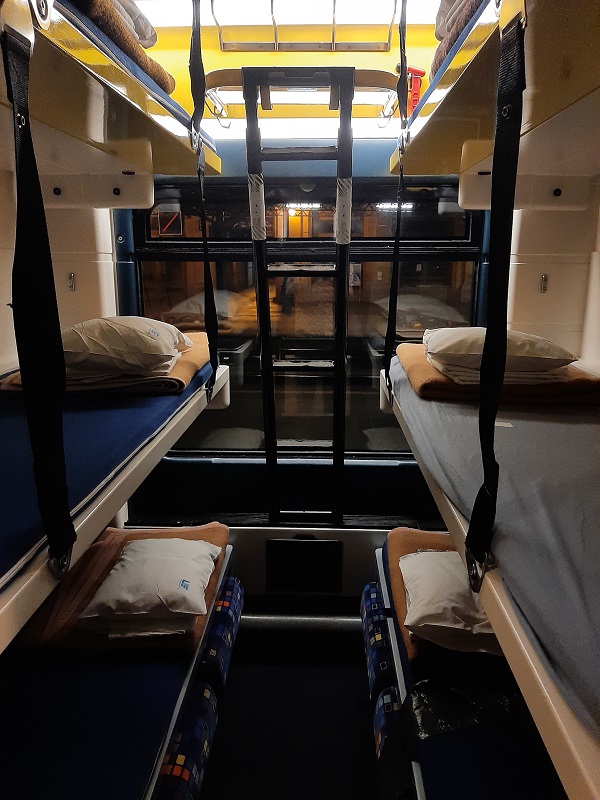
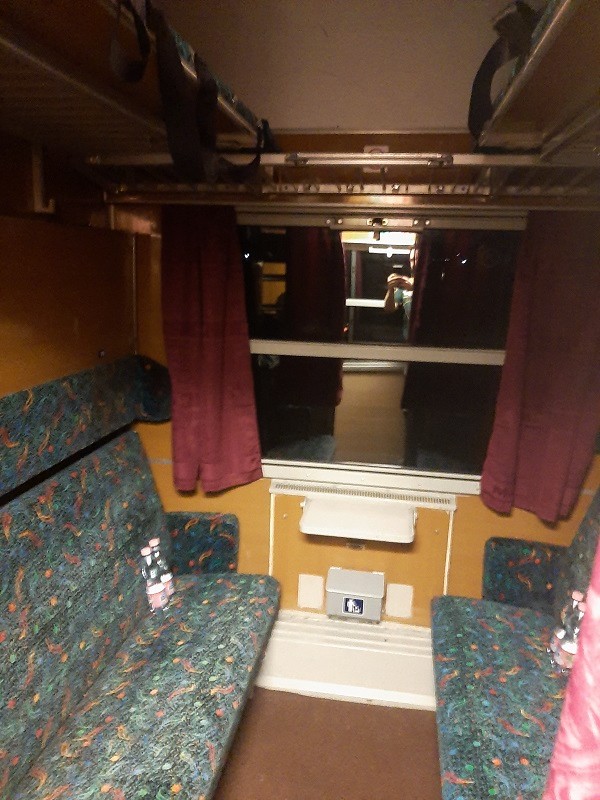

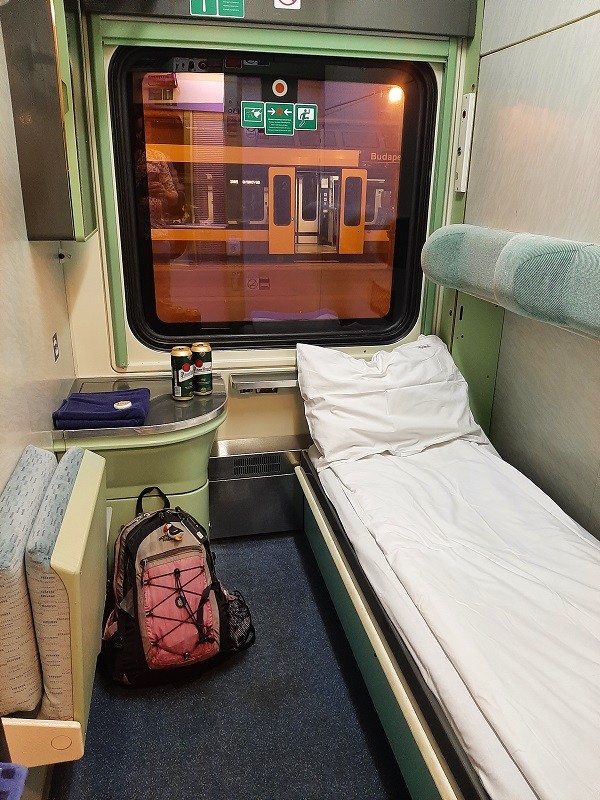
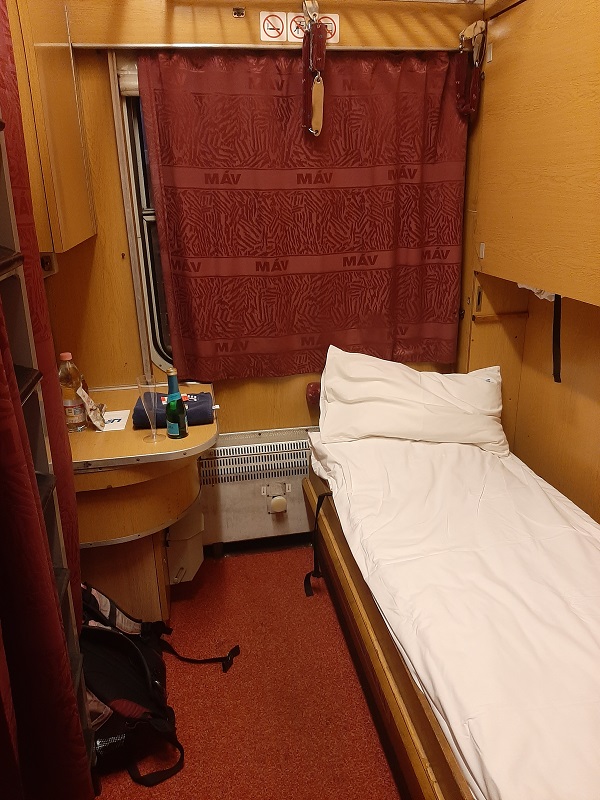
Travelling by train to and from Hungary
Hungary has frequent international train services to most of its neighbouring countries and beyond, with the exception of rail links to the Balkans, which are relatively poor in comparison.
It’s straightforward to travel from Hungary to Austria and onwards to other countries in Central and Western Europe, such as Germany and the Czech Republic.
Rail links from Hungary to the north into Ukraine and east into Romania are also good, with plenty of daytime options as well as convenient night trains.
If you want to head south from Hungary into the Balkans, the situation is somewhat different, as train connections to Slovenia and Croatia are a bit of a mixed bag, while the current rail links between Hungary and Serbia can only be described as poor, although in the case of the latter, the authorities are working hard to improve the situation.
For international long-distance train travel, including night trains, tickets are almost always cheaper when booked in advance, except for local cross-border services, which usually have a fixed price.
Let’s take an in-depth look at all the international rail connections between Hungary and its neighbours, as well as other countries with direct train services.
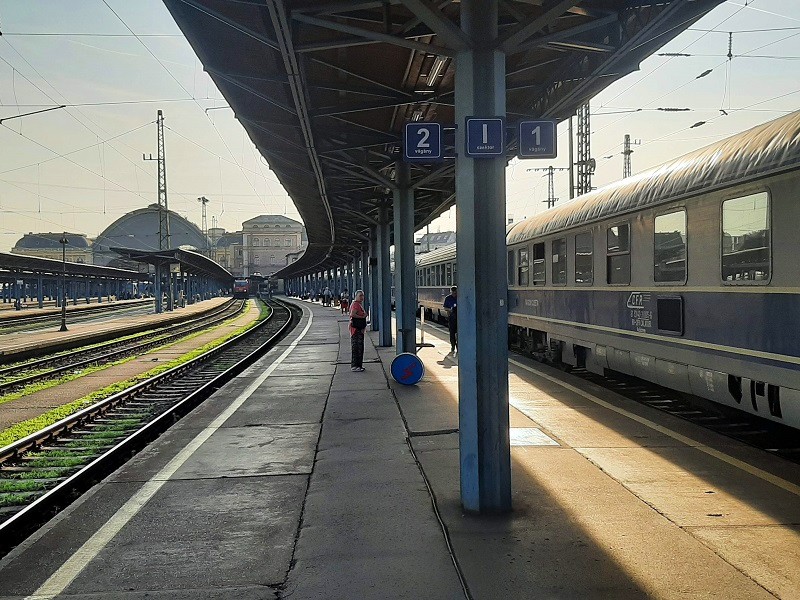
Hungary to Austria
There are multiple railway links between Hungary and Austria, and the train connections between the two countries are excellent.
This is especially true if you want to travel by train between the Hungarian capital of Budapest and the Austrian capital of Vienna, as there is a departure every hour on this major railway artery, with half of the services being EuroCity trains operated by Hungarian Railways (MÁV) and the other half modern high-speed Railjet Express trains operated by Austrian Federal Railways (ÖBB).
You’ll find a Hungarian dining car on these EuroCity trains and an Austrian dining car on the Railjet trains.
I’ve detailed the journey by train from Vienna to Budapest in a separate article.
En route between Budapest and Vienna, these trains all stop in Tatabánya and Győr, with some also stopping in Mosonmagyaróvár and Hegyeshalom.
Some of the Railjet trains from Budapest continue deeper into Austria and run from Vienna onward to Linz, Salzburg, or even as far as Innsbruck.
On the other hand, some EuroCity trains from Vienna continue further into Hungary beyond Budapest, with some of these services extending to Debrecen and the Ukrainian border at Záhony/Chop, or to Satu Mare and Baia Mare in Romania.
These EuroCity trains continue the old European tradition of being named services, with the EuroCity ‘Szamos’ operating the Vienna-Budapest-Baia Mare route, and the EuroCity ‘Hortobágy’ and ‘Tisza’ both running from Vienna via Budapest and Debrecen to Chop in Ukraine.
The EuroCity trains that solely run between Vienna and Budapest are all named services as well, carrying names such as ‘Semmelweis’, ‘Liszt Ferenc’, ‘Csárdás’, and ‘Lehár’, with the special ‘Advent’ EuroCity being an extra train that operates only during the busy travel period around Christmas.
From Budapest, there are also two daily InterCity train services to Graz, running via Győr and Szombathely.
There are also multiple interregional and local rail connections across the Austro-Hungarian border, which are useful for those looking to explore some of the lesser-known travel destinations in these two countries.
Most useful for travellers are the multiple daily trains linking Sopron in Hungary with Wiener Neustadt and Vienna in Austria, as well as the trains across the Austro-Hungarian border at Szentgotthárd on the railway line between Graz and Szombathely.
When travelling by train between Hungary and Austria, it’s best to compare prices between MÁV and ÖBB to see which offers the lowest price for your connection, as there can sometimes be significant differences, with the Hungarians often having the better deals.
In addition to MÁV and ÖBB-operated trains, you can hop on one of the four daily train services by private rail operator RegioJet between Budapest (Déli station) and Vienna, so this company can also be worth checking out for travel between Hungary and Austria.
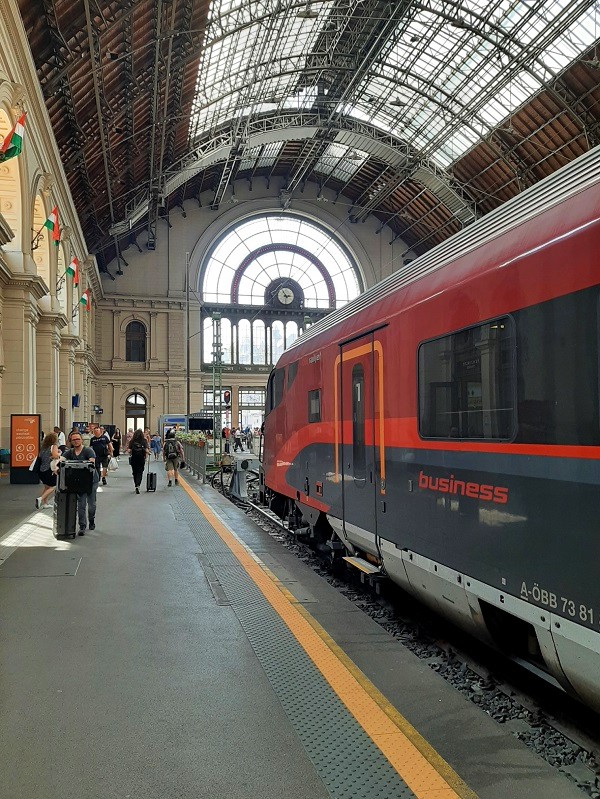
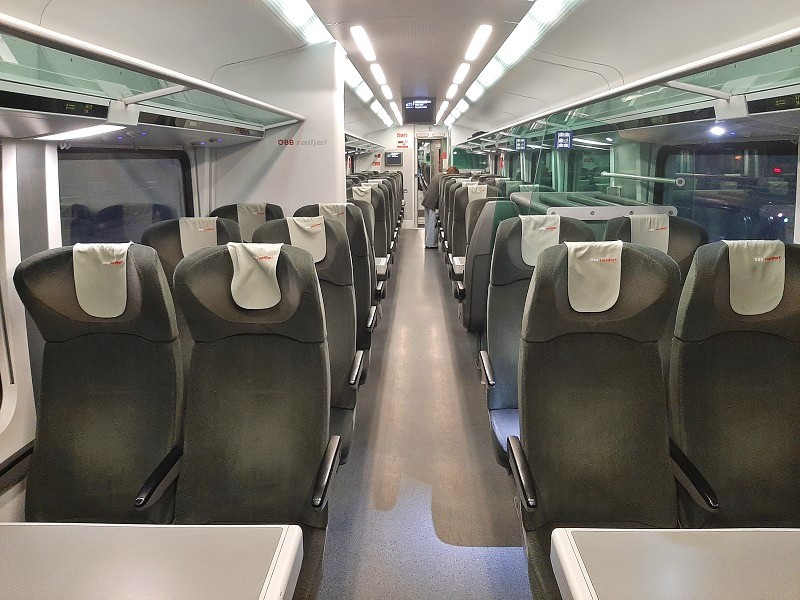
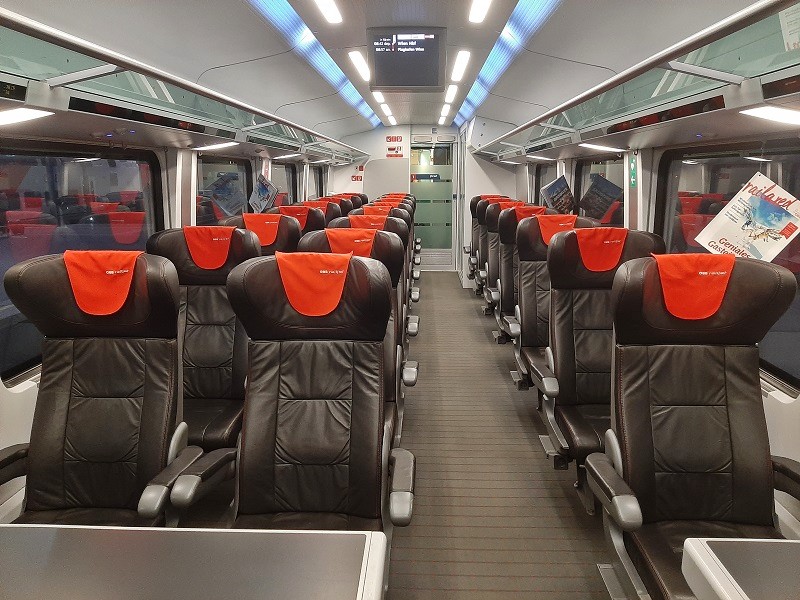
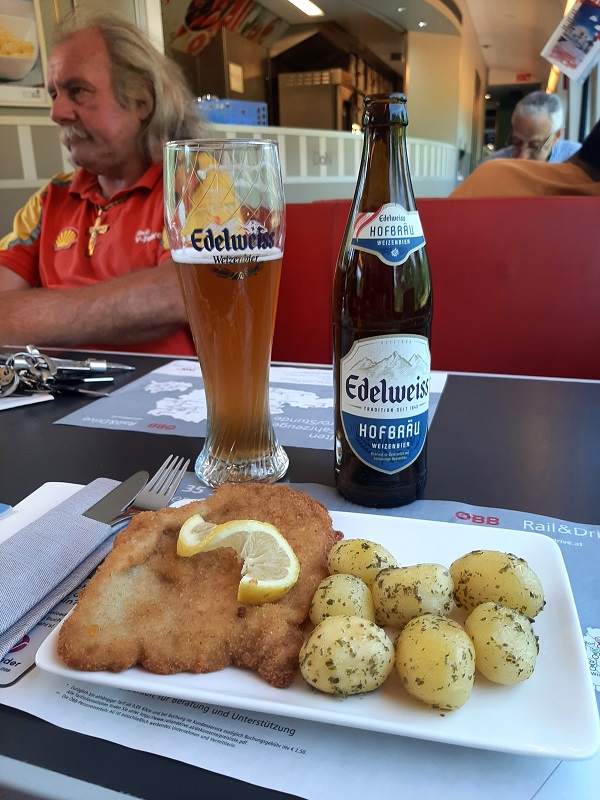
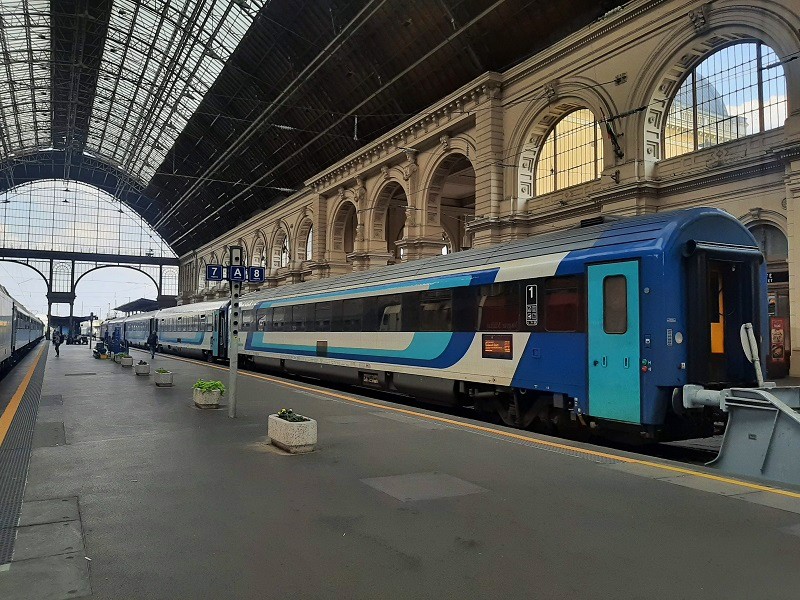

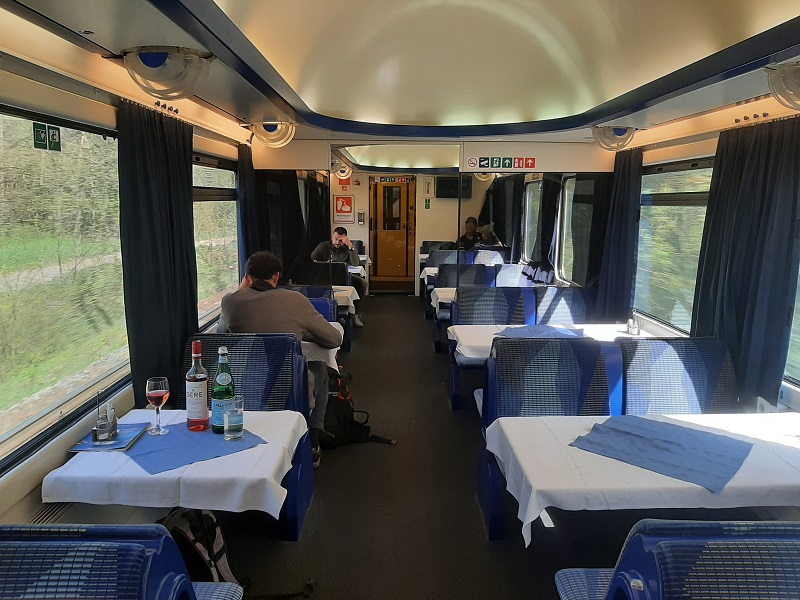

Hungary to Croatia
There are daytime trains connecting Hungary and Croatia, along with seasonal night trains linking Budapest to the Croatian coast.
One of these seasonal night trains is the InterCity ‘Adria’, which is operated by MÁV and typically runs from mid-June to late September between Budapest and Split, stopping en route in Zagreb in the middle of the night.
The ‘Adria’ night train, which features modern couchette and sleeper coaches, is a particularly great way to travel between Hungary and Croatia, as it carries a historic Hungarian dining car and offers excellent views along the route, passing Lake Balaton in the early evening and the Dalmatian coastline the following morning.
Besides the ‘Adria’ night train to Split, MÁV also operates the ‘Retro Istria Express’ night train from Budapest to Rijeka, which runs via Ljubljana in Slovenia.
Although the ‘Istria’ night train doesn’t have a dining car, it is well-known for its retro sleeper and couchette coaches, which provide plenty of charm (and opening windows from which you can lean out as the train passes through the wonderful Istrian scenery!) and are just as comfortable as the modern coaches found on the ‘Adria’.
Besides these seasonal night trains, there is also a daily, year-round daytime train linking Budapest (Déli station) with Zagreb, called the ‘Agram-Tópart’ InterCity, which runs along the southern shore of Lake Balaton and crosses the Hungarian-Croatian border between Gyékényes and Koprivnica.
This train usually runs with a combination of comfortable Croatian and Hungarian coaches, the former featuring 6-seat compartments and the latter with open-plan saloon cars.
Connections across the border between Hungary and the eastern Croatian region of Slavonia are rather poor, as travelling between the cities of Pécs and Osijek requires a change of trains at the Croatian border station of Beli Manastir, with trains on either side of the border not being coordinated, often resulting in a lengthy connection time.
It’s a far cry from the situation a decade or so ago when there were direct trains from Budapest to Osijek, which even continued to Sarajevo in Bosnia!
As the Croatian Railways website cannot book international trains, visit the MÁV website to book your train ticket between Hungary and Croatia.
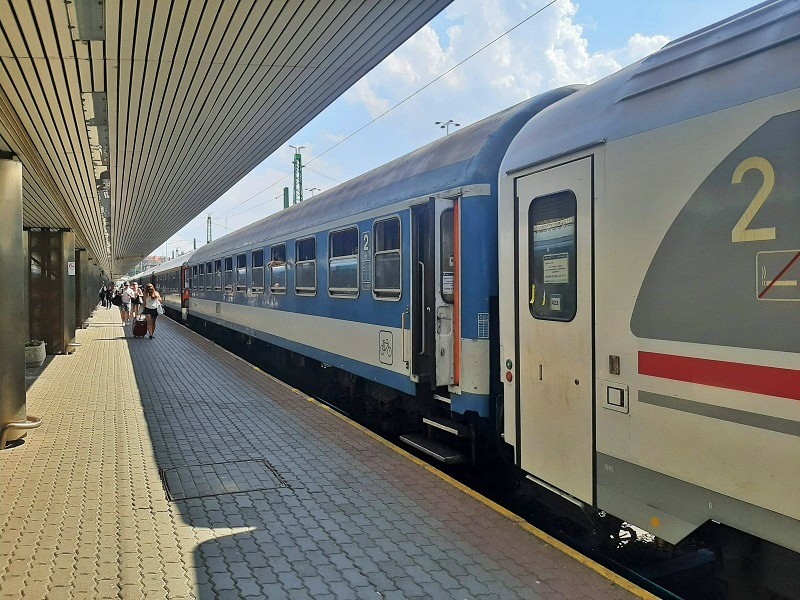
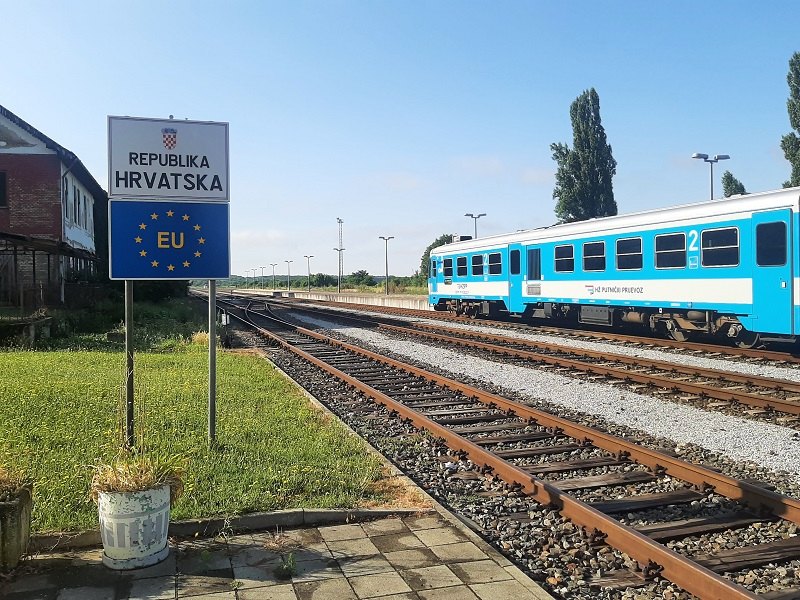
Hungary to the Czech Republic
Rail connections between Hungary and the Czech Republic are excellent, and it’s a great pleasure to travel by train between these two countries.
Every two hours, an EuroCity train departs from Budapest Nyugati station towards Břeclav, Brno, and Prague in the Czech Republic.
Among these connections is the MÁV-operated EuroCity train ‘Hungaria’, as well as several ‘Metropolitan’ EuroCity trains operated by České dráhy (ČD), the Czech Railways.
These trains offer similar comfort, with the biggest difference being that the EuroCity ‘Hungaria’ uses Hungarian coaches and a dining car, while the ‘Metropolitan’ EuroCity trains use Czech coaches (occasionally with the odd Slovakian coach as well) and a Czech dining car.
It’s a pleasant journey, with some lovely views during the first hour or so out of Budapest (or the last hour of the journey when heading to Budapest) as the train travels along the railway line parallel to the River Danube to the Hungarian-Slovakian border.
When travelling between Budapest and Prague, you can also opt for the EuroNight ‘Metropol’, a night train service operated by the Czech Railways, with comfortable berths in couchette and sleeping cars.
This could be a great option if you want to maximise sightseeing time, as you travel conveniently overnight and save on a night’s hotel bill as well.
Tickets for all of the above trains be booked on both the MÁV and ČD websites, so check which of the two offers the best prices.
Czech private train operator RegioJet runs three daily trains between Budapest (Déli station) and Prague via Vienna and Brno, offering an alternative way to travel by train between Hungary and the Czech Republic.
Check out my review of this private rail company to learn what it’s like on board a RegioJet train.

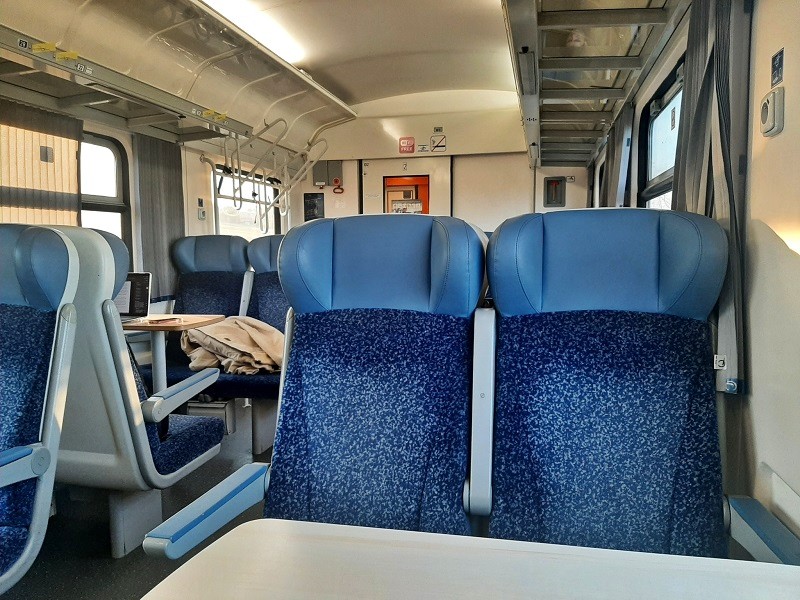


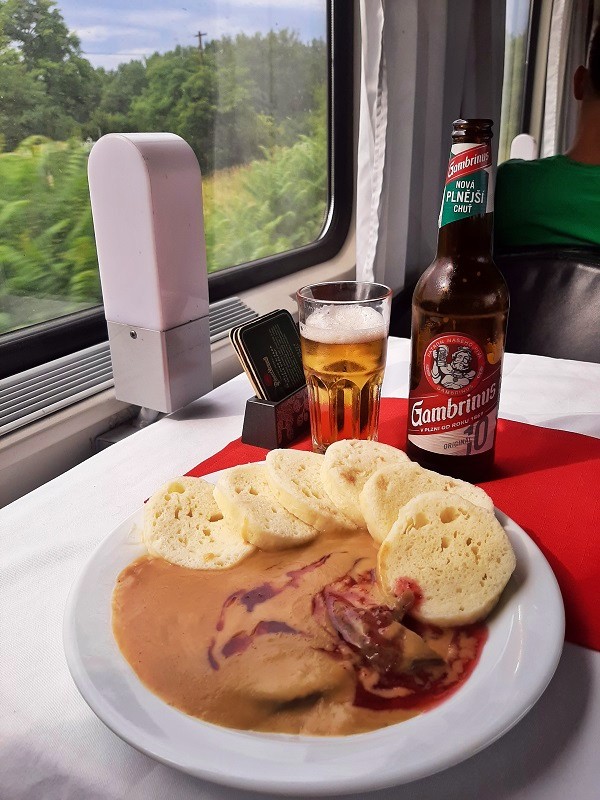
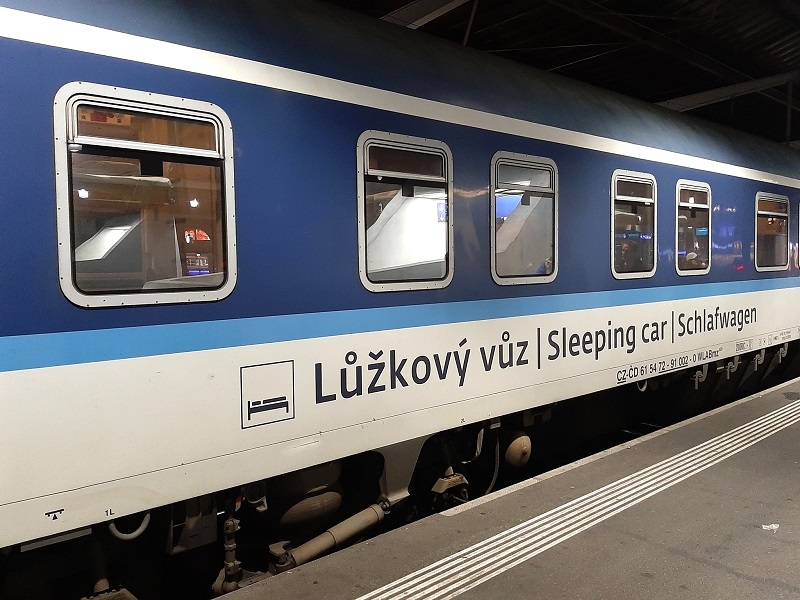
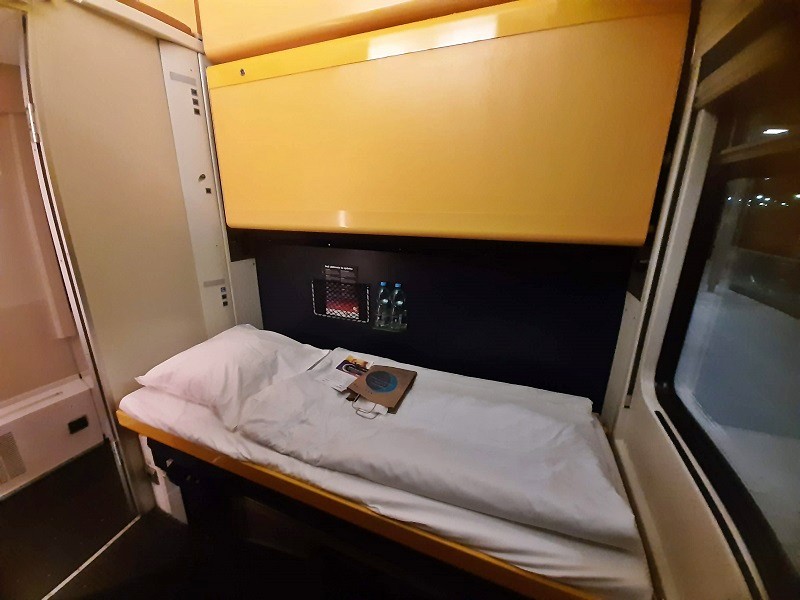
Hungary to Germany
Although the distance between Hungary and Germany is relatively large, these two countries are well-connected by train, with both daytime and night trains available.
The most important daytime connection between Hungary and Germany is provided by the Railjet trains between Budapest and Munich (via Győr, Vienna, Linz, and Salzburg), with five daily departures in each direction.
These modern high-speed trains are operated by the Austrian Railways (ÖBB) and feature a dining car.
In Munich, you can connect to many other German destinations, particularly those in southern, central, and western Germany.
If you plan to travel between Hungary and northern or eastern Germany, the daily EuroCity train ‘Hungaria’, which links Budapest with Dresden, Berlin, and Hamburg via Bratislava and Prague, and features a great quality dining car, is a better option.
There are also two Hungarian night trains operated by MÁV between Hungary and Germany, with the EuroNight ‘Kálmán Imre’ linking Budapest with Munich, Augsburg, Ulm, and Stuttgart, and the EuroNight ‘Metropol’ linking Budapest with Dresden and Berlin via Prague.
For daytime trains between Hungary and Germany, check whether MÁV, the German Railways (Deutsche Bahn), or the Austrian Railways (ÖBB) offers the best price for your connection, while night trains between these two countries are best booked on the MÁV website.

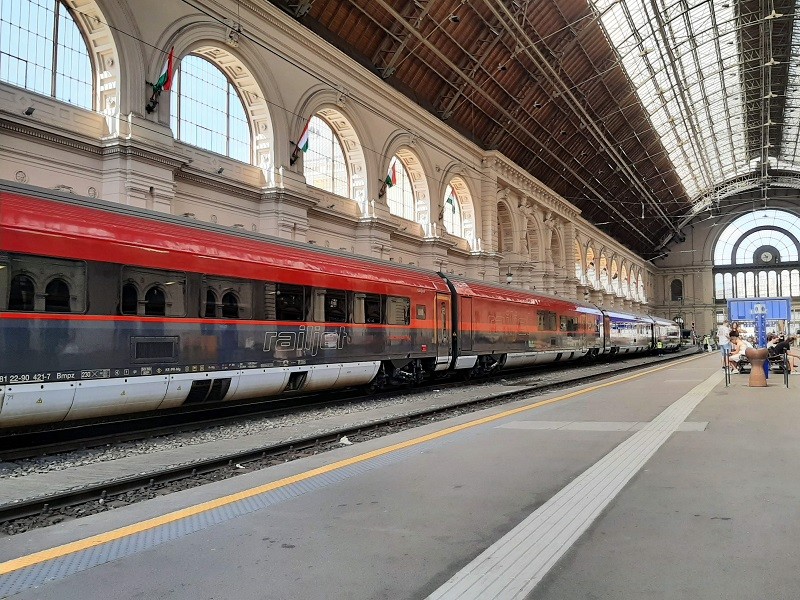
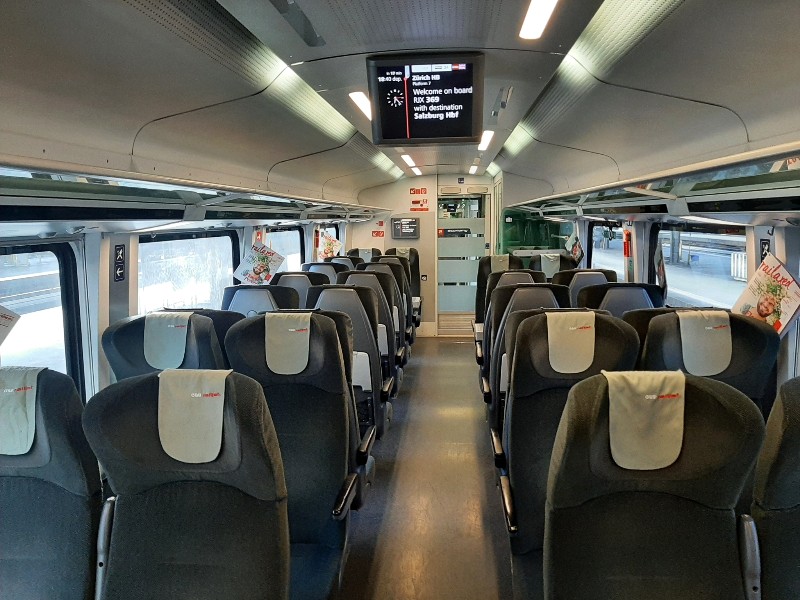


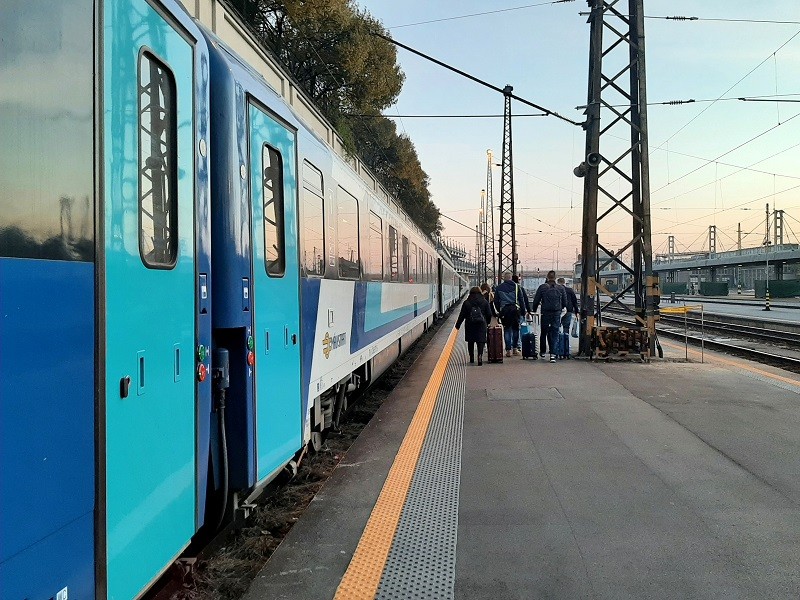
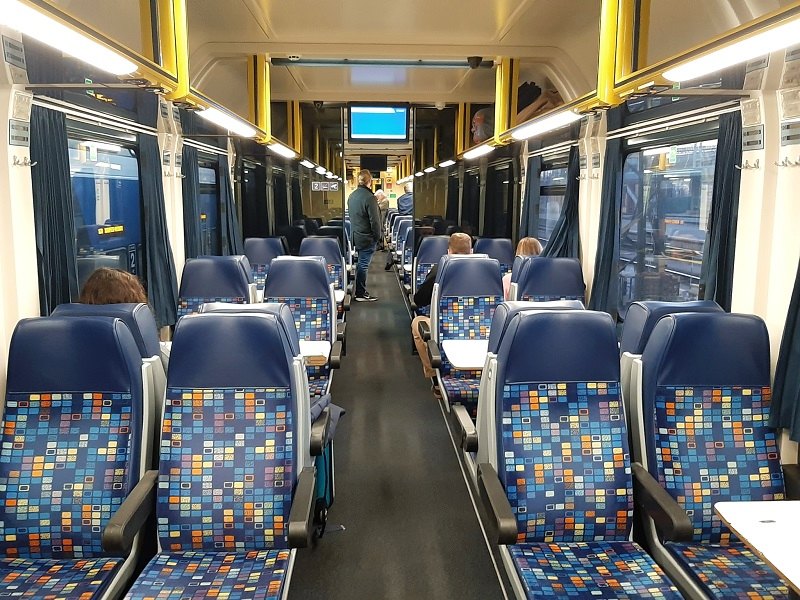


Hungary to Poland
If you wish to travel between Hungary and Poland by train, you can choose between a daytime train and a night train.
The daytime train is the daily EuroCity ‘Báthory’ from Budapest (Nyugati station) to Warsaw, which is operated by the Hungarian Railways (MÁV) and includes a dining car.
On its long route between Hungary and Poland, the EuroCity ‘Báthory’ also passes through Slovakia and the Czech Republic, stopping in cities such as Bratislava, Ostrava, and Katowice, among others.
The Budapest-Warsaw EuroCity ‘Báthory’ also carries through coaches to Kraków and Przemyśl, which are detached from the train at Bohumín and attached to the Prague-Kraków-Przemyśl EuroCity train ‘Cracovia’, which allows you to also reach these Polish cities directly by train from Hungary.
You can also take a night train from Hungary to Poland, as the EuroNight ‘Metropol’ connects Budapest with Kraków and Warsaw.
This daily Budapest-Kraków-Warsaw night train is operated by the Polish State Railways (PKP) and features modern Polish sleeper and couchette coaches, as well as a 2nd class seating coach, though the latter is not recommended for overnight journeys.
The daytime and night trains between Budapest, Kraków, and Warsaw can be booked on both the MÁV and Polish Railways websites, so compare the two to see who offers the best ticket prices.
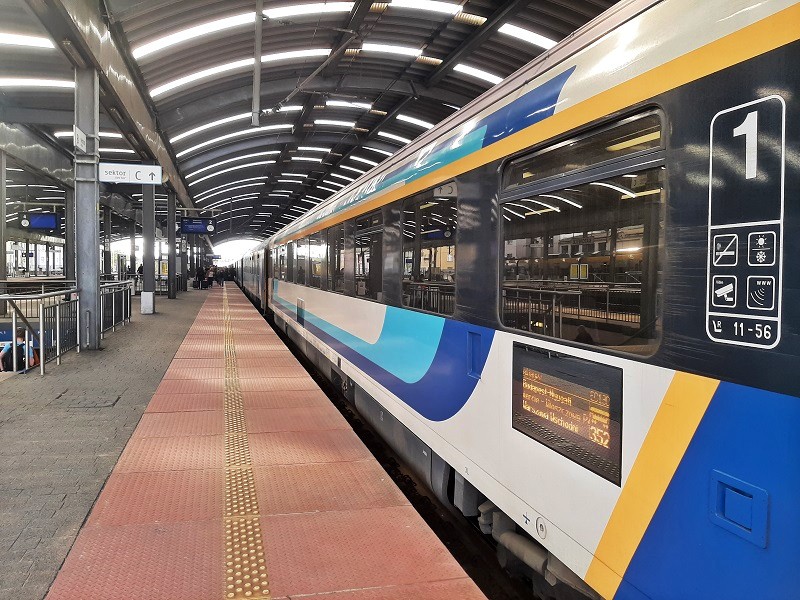

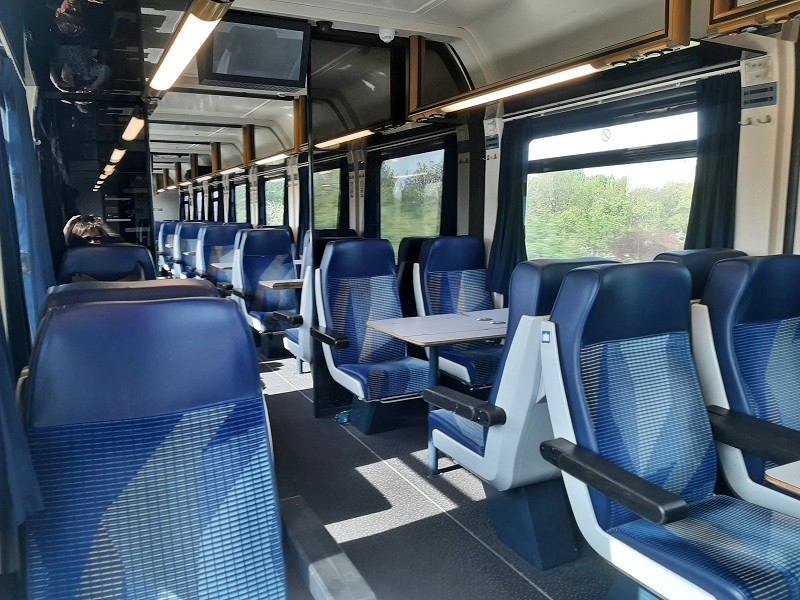
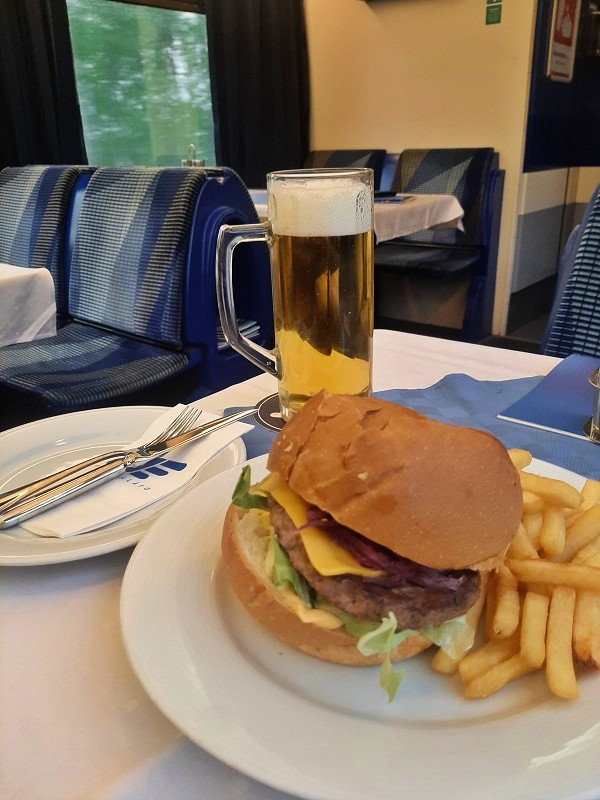
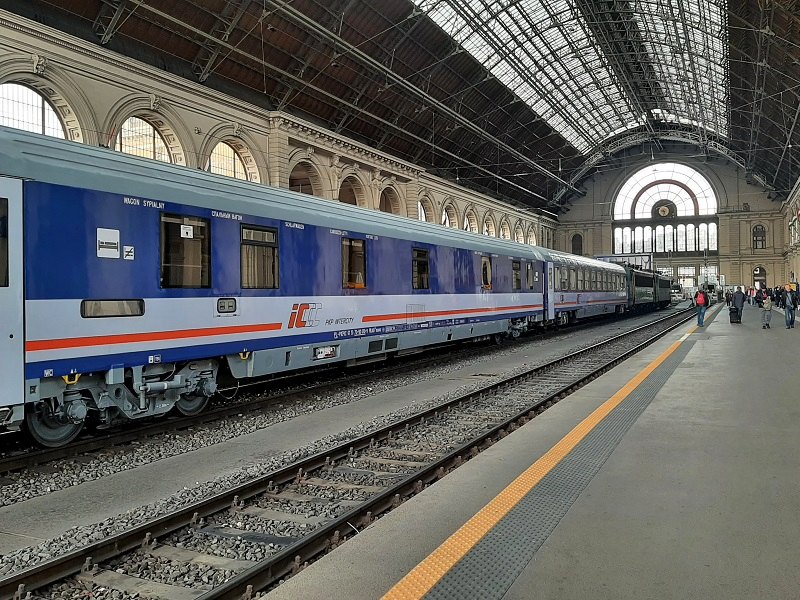
Hungary to Romania
Dozens of daytime and night trains connect Hungary with Romania, making this the preferred way to travel between the two countries.
Due to often outdated railway infrastructure, long stops for passport control at the border, and the mountainous terrain in Romania, travel times by train between Hungary and Romania can however be long.
Because of this, many people prefer the more convenient night trains over long daytime journeys when travelling from Hungary deeper into Romania to cities like Bucharest or Brașov, while daytime trains are the best option for journeys from cities like Budapest to places relatively close to the Hungarian-Romanian border, such as Timișoara, Oradea, or Cluj-Napoca.
Currently, four different night trains link Hungary with Romania, although only one is operated by Hungarian Railways, namely the ‘Corona’ InterCity train from Budapest to Brașov.
The ‘Corona’ night train features comfortable MÁV sleeper and couchette coaches, along with a dining car and standard 2nd class seating coaches.
Although it may seem that the ‘Corona’ night train takes a somewhat circuitous route between Budapest and Brașov, travelling via Debrecen, Carei, Gheorgheni, and Miercurea Ciuc, it is actually quite logical, as it passes through parts of Transylvania predominantly populated by the ethnic Hungarian minority, an area known as Székely Land.
Unlike the other night trains between Hungary and Romania, you’ll find that the ‘Corona’ is mostly used by Hungarians, while the other sleeper trains tend to have more Romanians and tourists on board.
The other three night trains linking Hungary with Romania are all operated by the Romanian Railways (CFR).
The ‘Ister’ night train runs from Budapest to Bucharest via Békéscsaba, Arad, Deva, Sibiu, and Brașov, featuring comfortable Romanian sleeper and couchette coaches, as well as 2nd class seating cars.
There is also the ‘Muntenia’ night train between Budapest and Bucharest, running via Békéscsaba, Arad, Timișoara, and Craiova, but it only features couchette and 2nd class seating cars.
Last but not least is the ‘Dacia’ night train between Vienna and Bucharest, which you can also take to or from Hungary, as this train also stops in Győr, Budapest, Szolnok, and Békéscsaba.
The ‘Dacia’ takes an altogether different route within Romania, as after the stop in Arad, it continues to Deva, Alba Iulia, Sighișoara, Brașov, and finally Bucharest.
On the ‘Dacia’ night train, you’ll find sleeper, couchette, and 2nd class seating cars.
The ‘Dacia’ night train has a Hungarian dining car attached on the stretch between Vienna and Budapest, while on Romanian territory, a carriage with a bistro counter selling basic drinks and snacks is usually attached to the train.
Some of the Romanian sleeper compartments on the ‘Dacia’ and ‘Ister’ night trains are en-suites, featuring their own bathroom with a toilet and shower instead of just a washbasin.
Although there’s no sure way to pre-assign these en-suite sleepers — as CFR only sells standard sleepers and cannot guarantee en-suite sleeper availability due to frequent rolling stock changes — you might get lucky and have one on your trip!
The ‘Corona’ night train is best booked on the MÁV website, whereas the Ister, Dacia, and Muntenia sleeper trains are best booked on the CFR website.



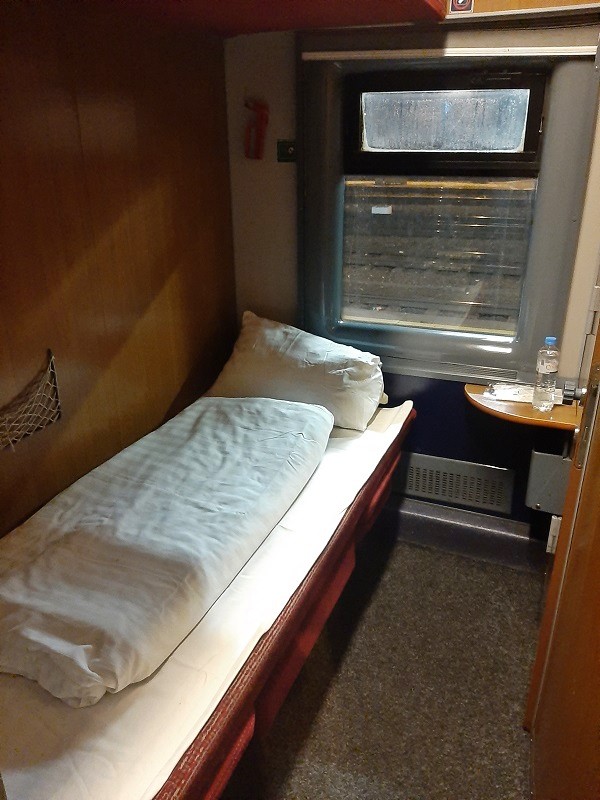
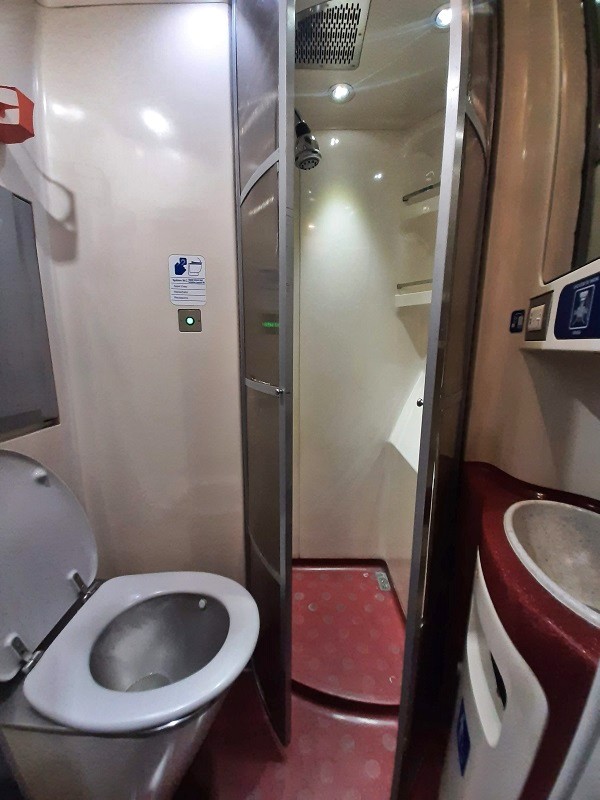



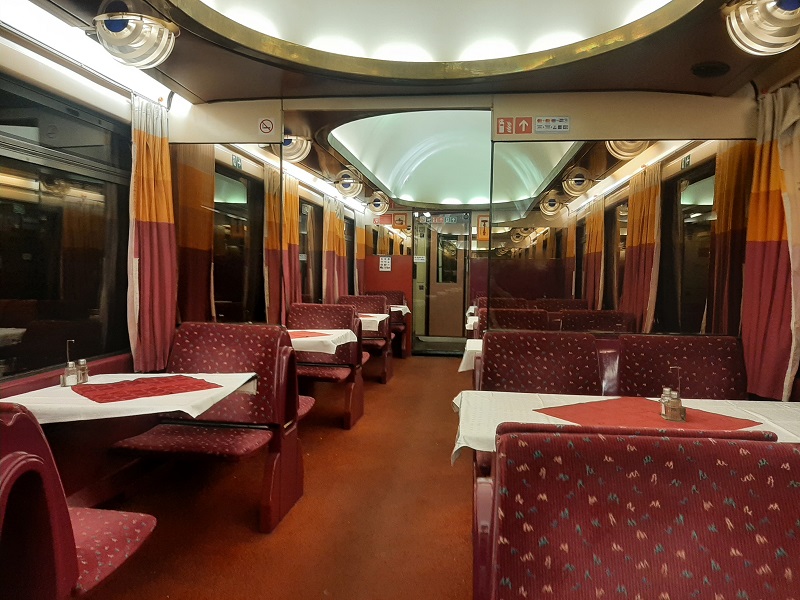
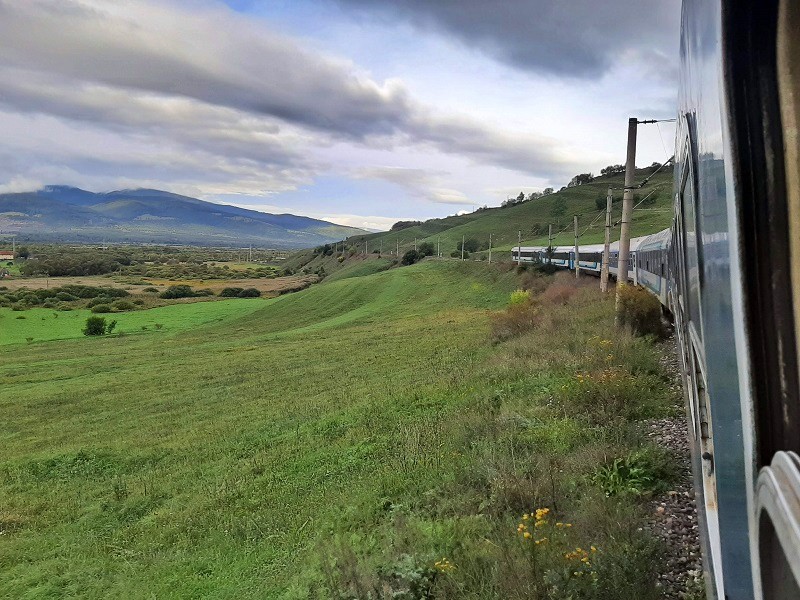
Hungary to Romania: The daytime trains
Apart from the four night trains mentioned in the previous paragraph, there are also numerous daytime trains between Hungary and Romania.
The ‘Traianus’ InterCity is the daytime train linking Budapest with Bucharest, running via Békéscsaba, Arad, Timișoara, and Craiova, with some lovely views of the Iron Gates of the River Danube around the halfway point.
Another InterCity train called the ‘Béga’ links Budapest with Timișoara via Békéscsaba and Arad.
The ‘Claudiopolis’ InterCity train links Budapest with Cluj-Napoca, a city known in Hungarian as Kolozsvár.
Normally, the Budapest-Cluj train runs via Szolnok, Püspökladány, and Oradea, but due to major engineering works on the railway line between Oradea and Cluj-Napoca, it now takes a more circuitous route via Békéscsaba, Arad, and Alba Iulia.
The daily ‘Szamos’ InterCity train, linking Vienna with Budapest, Debrecen, Satu Mare, and Baia Mare, is an excellent choice if you want to travel between Hungary and Northern Romania, as it features a dining car to enhance the comfort of the long journey.
Two daytime InterCity trains link Budapest with Brașov each day: The ‘Harghita’, which runs via Debrecen, Carei, Gheorgheni, and Miercurea Ciuc, and the ‘Fogaras’, which follows a more southerly route through Békéscsaba, Arad, Deva, Sibiu, and Fagaraș.
These trains are complemented by multiple daily InterCity services linking Budapest with just Arad (via the Curtici-Lökösháza border), meaning there is now a train between these cities every two hours during daytime hours.
All these cross-border InterCity trains are jointly operated by Hungarian and Romanian Railways and may feature carriages from either company.
If you want to travel between Budapest and Oradea, you need to take a domestic train to Püspökladány and change there to a local service crossing the Romanian border to Oradea.
You’ll also find local cross-border trains between Hungary and Romania on the Békéscsaba-Salonta and Debrecen-Valea lui Mihai lines.
Tickets for trains between Hungary and Romania can be booked on the CFR website, as well as on the booking platform of the MÁV website.
It’s recommended to compare prices on both websites, as they may vary.
For more information about trains in Romania, do read our guide about train travel in Romania as well.



Hungary to Serbia
Currently, rail links between Hungary and Serbia are rather poor.
For what was once a major pan-European rail corridor, even traversed by the Paris to Istanbul ‘Orient Express’, the current situation is quite shameful, as you can’t even travel from Budapest to Belgrade at the moment.
However, both the Hungarian Railways and Serbian Railways are working hard to improve the situation, with a new high-speed line across Serbia from Subotica to Novi Sad and Belgrade nearly completed, and the Hungarians working hard to rebuild the Budapest-Kiskunhalas-Subotica railway line to modern standards.
This is expected to be completed by 2026, when a direct train service should finally resume between Budapest, Novi Sad, and Belgrade, with travel times under 3 hours.
As of now, you can still travel from Hungary to Northern Serbia by train with a small detour and a change of trains, although if you want to continue to Belgrade, you’ll have to take a bus for part of the route.
Subotica, a beautiful city in Northern Serbia with a sizeable Hungarian minority and shared Hungarian history, is linked by multiple daily trains to Szeged, just across the border in Hungary.
If you therefore want to travel from Budapest to Serbia, you first have to take a domestic Hungarian InterCity train to Szeged and change there onto a local train to Subotica.
Once in Subotica, you can take a Serbian train to destinations such as Sombor or Senta, but if you want to head south to Novi Sad or Belgrade, you will currently have to take a bus.
The Szeged-Subotica cross-border train can be easily booked online on the MÁV website.
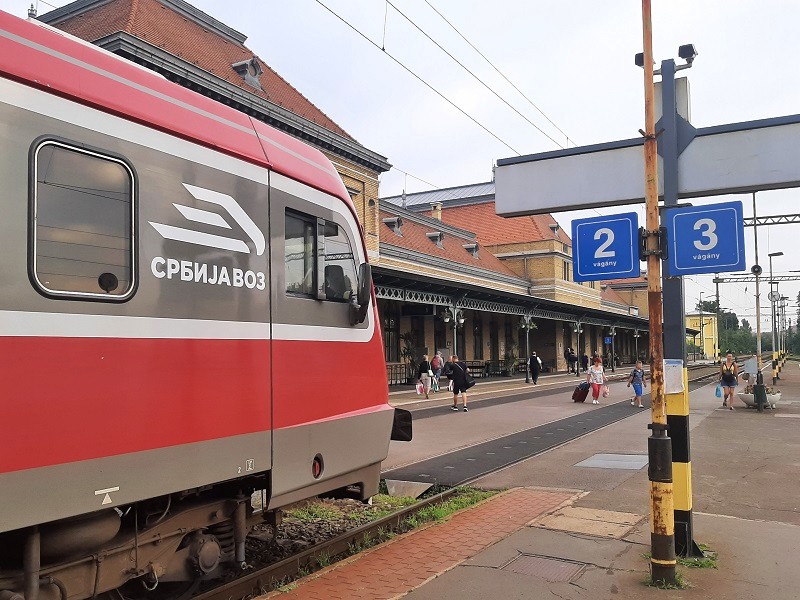
Hungary to Slovakia
Although Hungary and Slovakia share a long border, there are train services only on the two main cross-border railway lines: The Budapest-Bratislava line and the Budapest-Miskolc-Košice line.
Every two hours, an EuroCity train departs from Budapest Nyugati station towards Bratislava, with most of these trains continuing towards the Czech Republic.
They include the daily ‘Hungaria’ and ‘Báthory’ EuroCity trains operated by Hungarian Railways (MÁV), as well as multiple daily ‘Metropolitan’ EuroCity trains operated by České dráhy (ČD), the Czech Railways, all of which have a dining car.
Part of this railway line runs parallel to the River Danube, offering beautiful views from the window.
Between Budapest and Bratislava, these trains stop at Nové Zámky, where you can change to trains heading to Komárno, a Slovak city with a Hungarian ethnic majority.
There are also multiple daily EuroCity and InterCity trains linking Budapest (Keleti station) and Miskolc with Košice in eastern Slovakia, using a mix of Hungarian and Slovak rolling stock.
Trains between Hungary and Slovakia can be booked through MÁV, the Slovak Railways (ŽSSK), or the Czech Railways (ČD), so it’s worth checking which of the three offers the best deal.

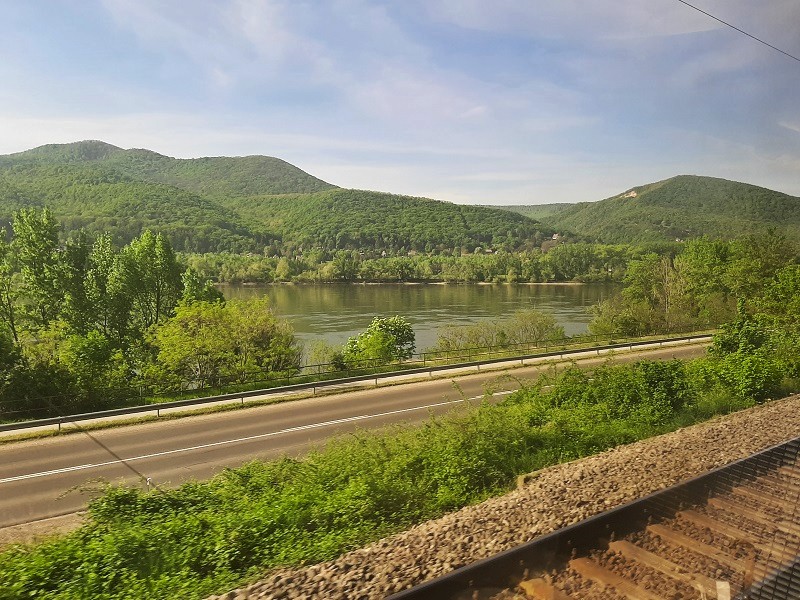
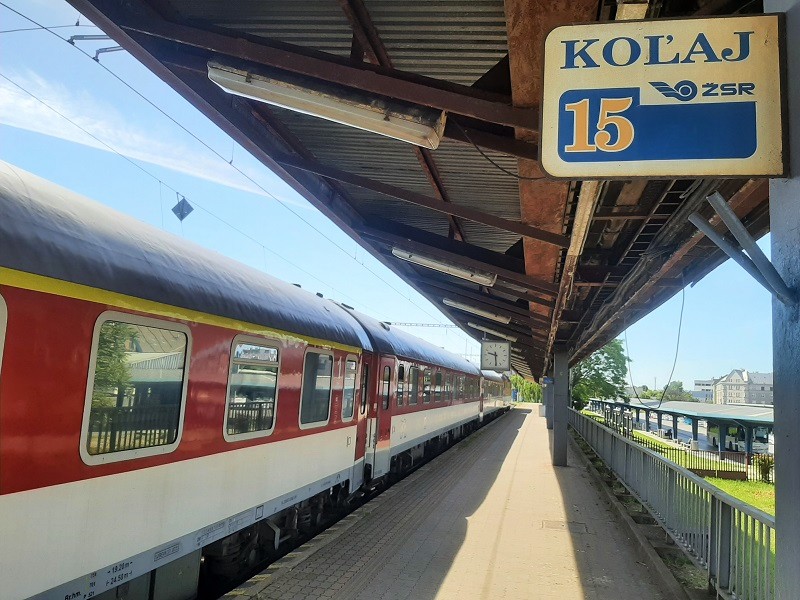
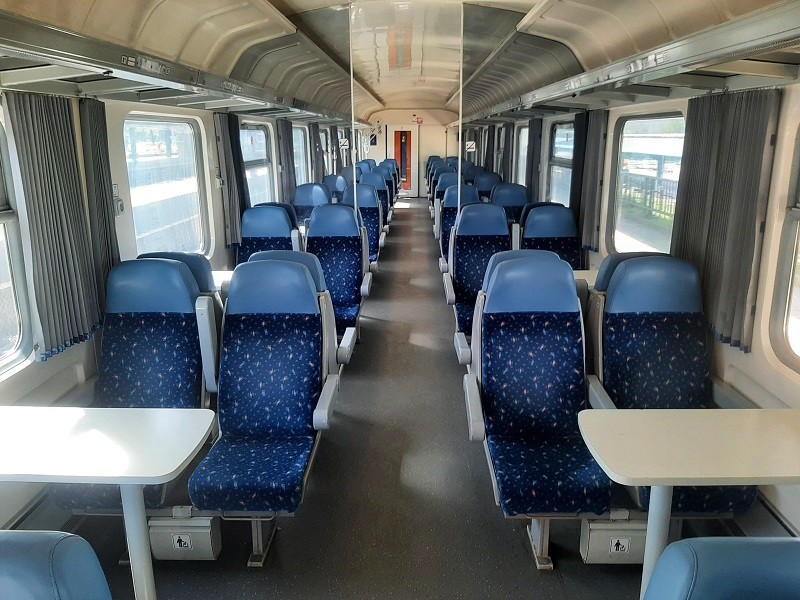
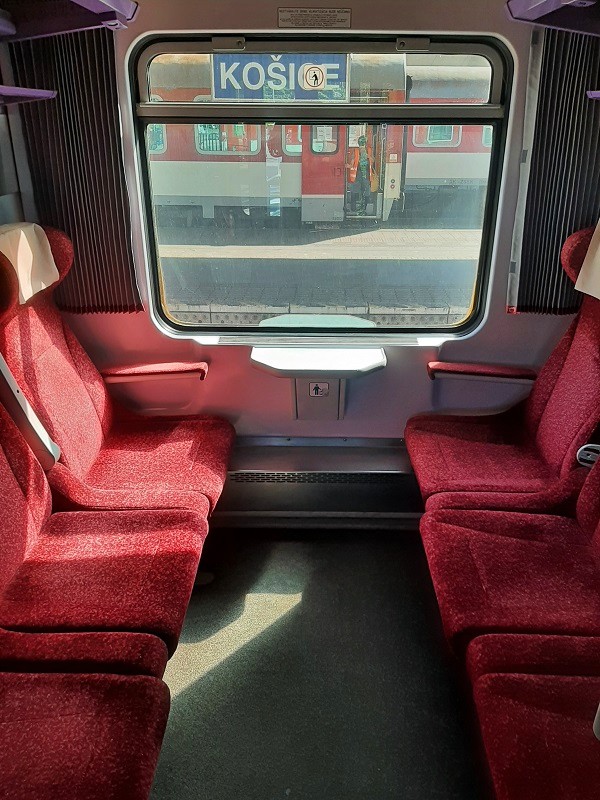
Hungary to Slovenia
If you need to travel between Hungary and Slovenia, you can choose from two daily year-round daytime trains from Budapest to Ljubljana and a seasonal night train to both Ljubljana and Koper.
The fastest train connection between Hungary and Slovenia is the daily InterCity ‘Citadella’, which runs from Budapest Déli station via Székesfehérvár, Veszprém, and Zalaegerszeg to the Hungarian-Slovenian border, from where it continues to Ptuj, Celje, Zidani Most, and its final station of Ljubljana.
There is also a second daily InterCity train called the ‘Dráva’, which runs from Budapest Keleti station via Győr and Szombathely to the Austrian city of Graz, continuing south into Slovenia to Maribor, Celje, and finally Ljubljana.
Both of these trains use a mix of Hungarian and Slovenian rolling stock and are comparable in quality, so your choice will most likely depend on the departure or arrival time that suits you best.
There is also a seasonal night train between Hungary and Slovenia run by MÁV, the Hungarian Railways.
This night train, called the ‘Retro Istria Express,’ links Budapest with Rijeka in Croatia, making a stop in the Slovenian capital of Ljubljana en route.
The ‘Retro Istria Express’ also carries through coaches to Koper on the Slovenian coast.
The ‘Istria’ night train is named after its retro sleeper and couchette coaches, which offer both comfort and charm, along with open windows that allow you to lean out from to enjoy the fresh air and wonderful Istrian scenery!
Trains between Hungary and Slovenia are best booked through the MÁV website.
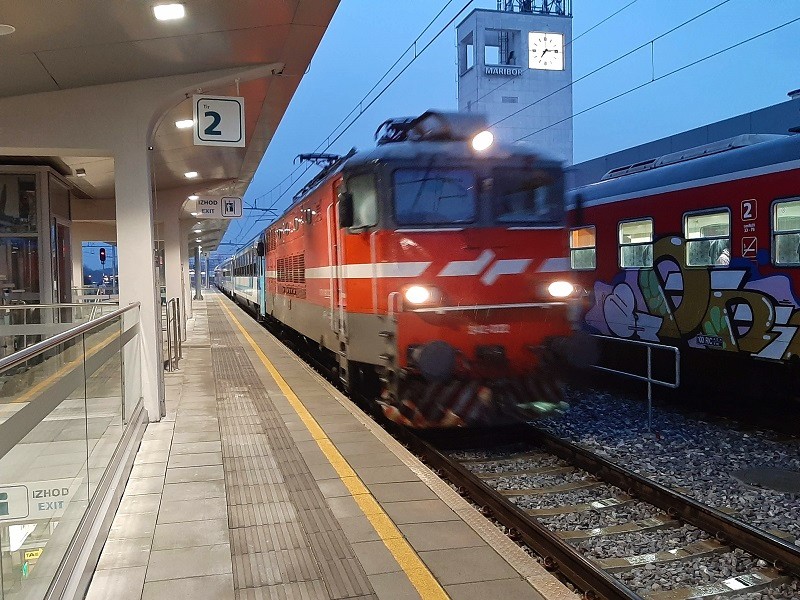
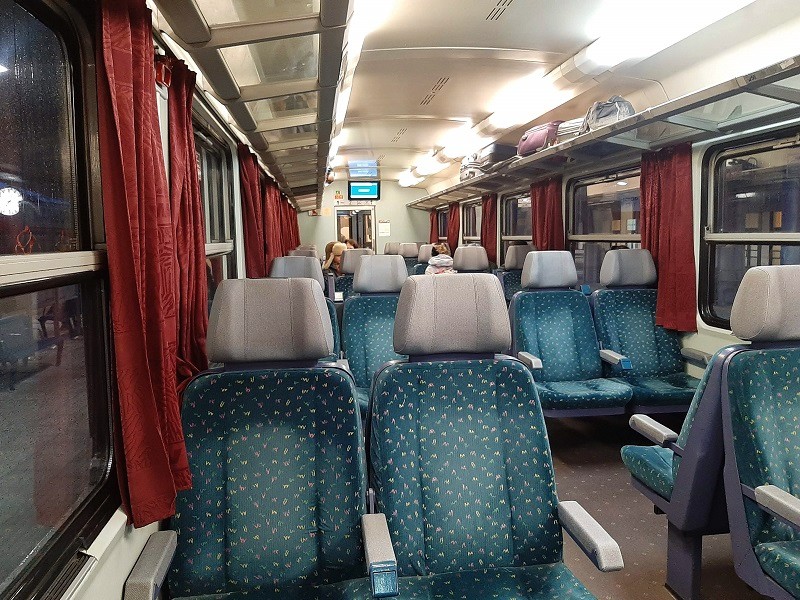
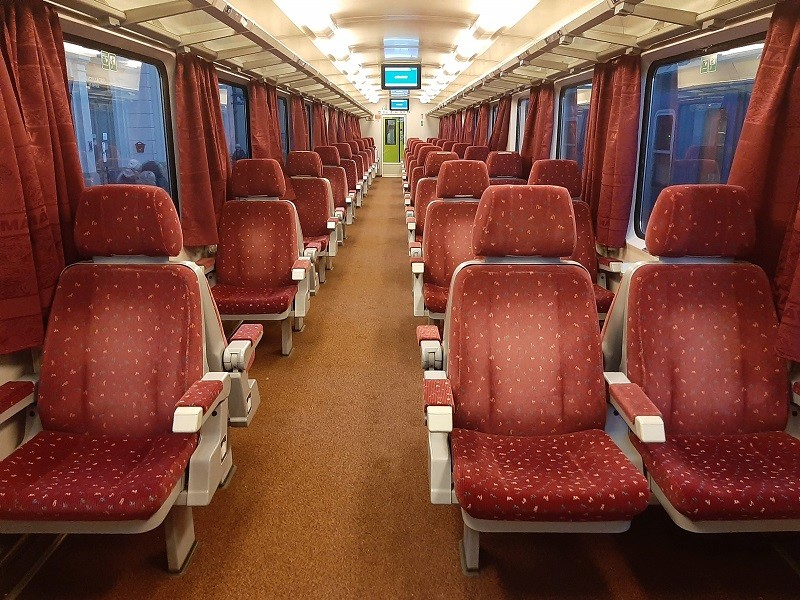

Hungary to Switzerland
You can travel between Budapest in Hungary and Zurich in Switzerland on both a daily daytime train and a night train.
The daytime service between Hungary and Switzerland is a modern Railjet train with dining car operated by the Austrian Railways (ÖBB), which travels from Budapest Keleti via Vienna, Salzburg, and Innsbruck to Zurich.
Although it’s a long ride, the train journey between Budapest and Zurich is scenic, particularly the stretch in western Austria between Tyrol and Vorarlberg, where the railway line crosses the Arlberg Pass.
The night train between Budapest and Zurich, the EuroNight ‘Kálmán Imre’ can however be a more convenient option.
This night train is operated by the Hungarian Railways (MÁV) and allows you to enjoy a good night’s sleep in the comfort of your couchette or sleeper compartment while travelling overnight between Budapest and Zurich.
Visit the MÁV website to book the night train between Budapest and Zurich, while for the daytime Railjet train, both MÁV and ÖBB can book it, so check which offers the best price.
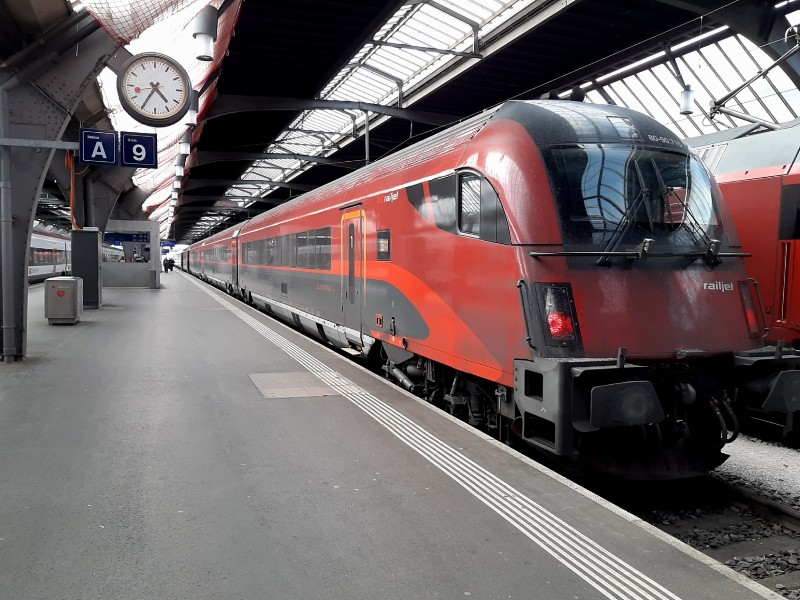
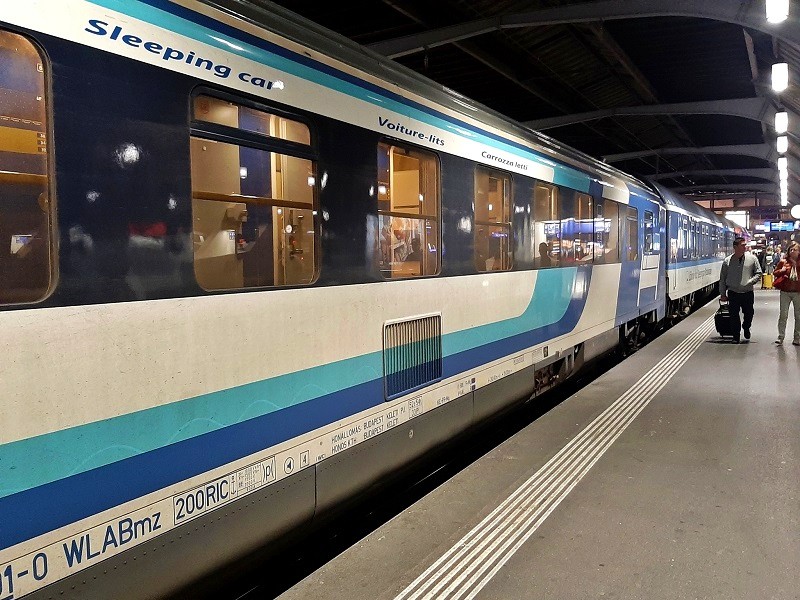
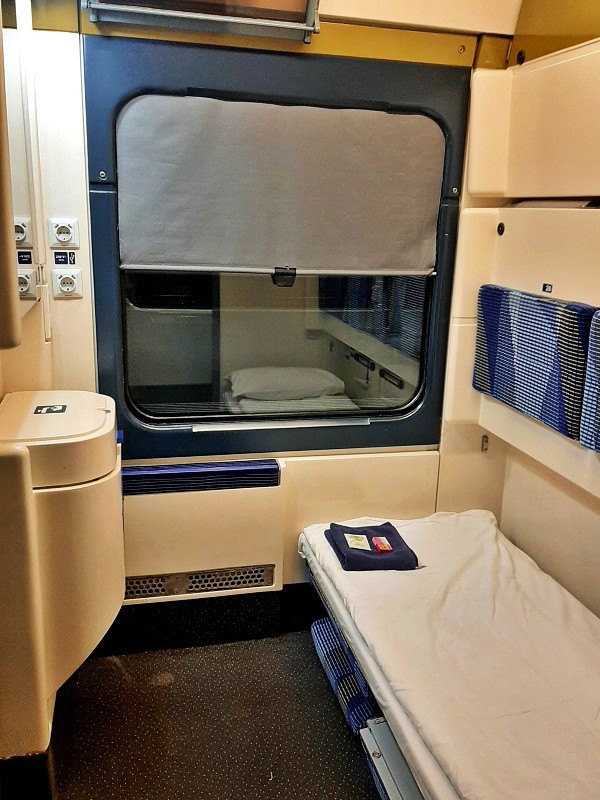
Hungary to Ukraine
Although Ukraine uses a different railway gauge than Hungary (broad gauge and standard gauge, respectively), the train connections between the two countries are good.
There are two sleeper trains between Hungary and Ukraine, both of them being operated by Ukrzaliznytsia, the Ukrainian Railways.
The ‘Transcarpathia’ night train, linking Budapest (Keleti station), Debrecen, Chop, Mukachevo, Lviv, and Kyiv, is the most important of the two sleeper trains linking Hungary with Ukraine.
The Vienna-Kyiv night train also runs through Hungary on the same route as the ‘Transcarpathia’, calling at Budapest and Debrecen, among other stops.
While primarily tailored towards passengers travelling to and from Austria, you can also use the Vienna-Kyiv night train if you only plan to travel between Hungary and Ukraine.
Both of these trains have a lengthy stop at the Ukrainian border station of Chop, where the bogies (wheelsets) of each wagon need to be changed to overcome the break of gauge, which is quite a spectacle as each wagon is lifted in the air while you remain on board.
The main daytime train between Hungary and Ukraine is the ‘Latorca’ InterCity, which is operated by MÁV and links Budapest with Debrecen, Záhony, Chop, and Mukachevo.
As the Chop-Mukachevo railway line in Ukraine is dual gauge, this train doesn’t need to undergo the time-consuming procedure of changing the bogies (wheelsets) of each wagon to overcome the break of gauge.
The ‘Hortobágy’ and ‘Tisza’ EuroCity trains, which have Hungarian dining cars for part of the journey, link Vienna with Budapest, Debrecen, Záhony, and Chop during the day.
In addition to these long-distance trains, there are also several local trains across the Hungarian-Ukrainian border between Záhony and Chop.
If you find no availability on the two international night trains from Hungary to Ukraine, you can always take a daytime train from Budapest to Chop or Mukachevo and connect there to a domestic Ukrainian night train, giving you many more options to travel to cities such as Lviv, Kyiv, or even Kharkiv and Odessa.
Note that the travel classes on board Ukrainian night trains differ slightly from those of European trains, offering accommodation in ‘Kupé’ 4-berth sleeper compartments or 2-berth Spalny Vagon (SV) sleeper compartments.
In ‘Kupé’, you have to make up your own bed for the night using the mattress pad and fresh bed linen provided by the provodnik or provodnitsa (male or female carriage attendant), while in ‘Spalny Vagon’, this is already done for you.
For private occupancy, all berths in either a Kupé or Spalny Vagon compartment must be booked.
To book the daytime trains between Hungary and Ukraine, use the MÁV website, while for night trains, you should use the Ukrainian Railways website.
Note that tickets for Ukrainian trains are only available 30 days in advance and sell out quickly, as demand outstrips supply on many international routes due to the war and the subsequent grounding of all air traffic.


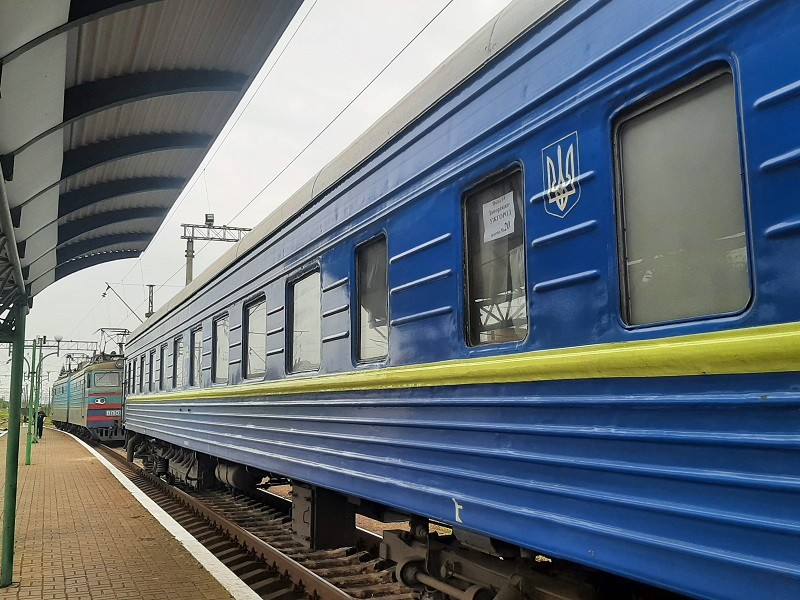
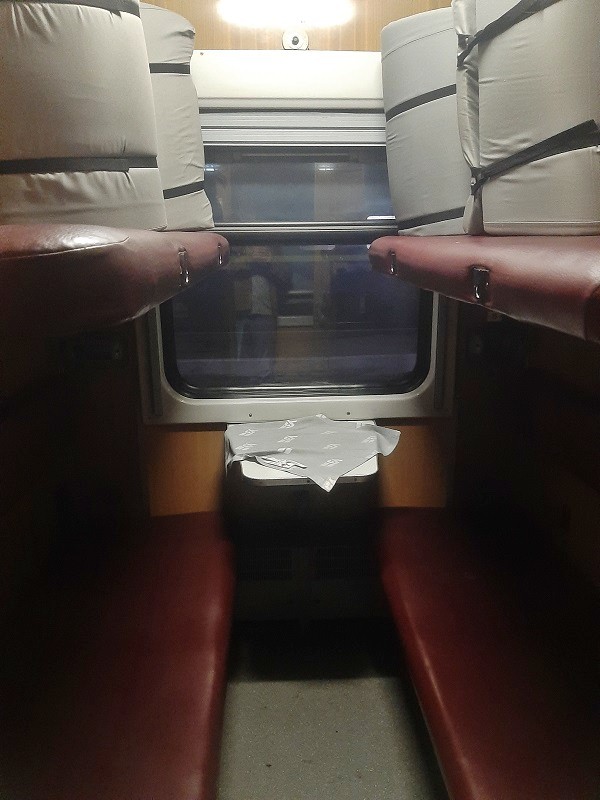
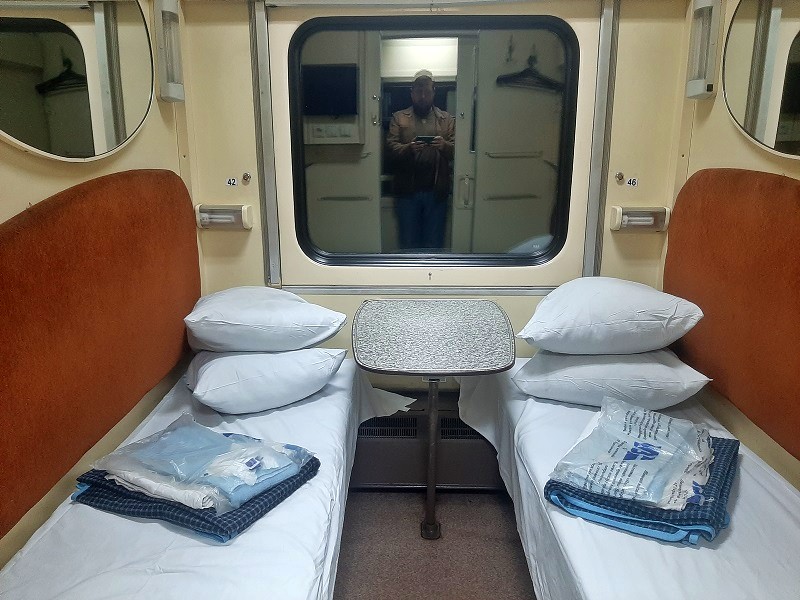

Travel by train between Hungary and other countries
It used to be possible to travel directly by train from Hungary to many more countries, such as Bulgaria, Greece, Italy, and even Russia, although all these connections have since been suspended.
However, it’s still easy to travel from Hungary to more far-flung corners of Europe by a series of connecting trains.
For example, if you want to travel by train between Hungary and France, it’s probably best to take a night train from Budapest to either Zurich or Stuttgart, as outlined above, and continue from there by TGV or ICE train into France.
An alternative is to take one of the many trains from Budapest to Vienna and connect to the Nightjet sleeper train from the Austrian capital to Paris.
Similarly, if you want to travel between Hungary and Scandinavia, you can either take the daily EuroCity train from Budapest to Hamburg or the night train from Budapest to Berlin, and continue from there by train to Denmark or Sweden.
If you want to travel by train to Bulgaria or even all the way to Turkey by train, it’s best to first travel to Romania.
The route planner of the German Railways is still the best for searching train connections across Europe and planning an itinerary, although you will likely need to book each leg separately on the national railway website of each respective country.
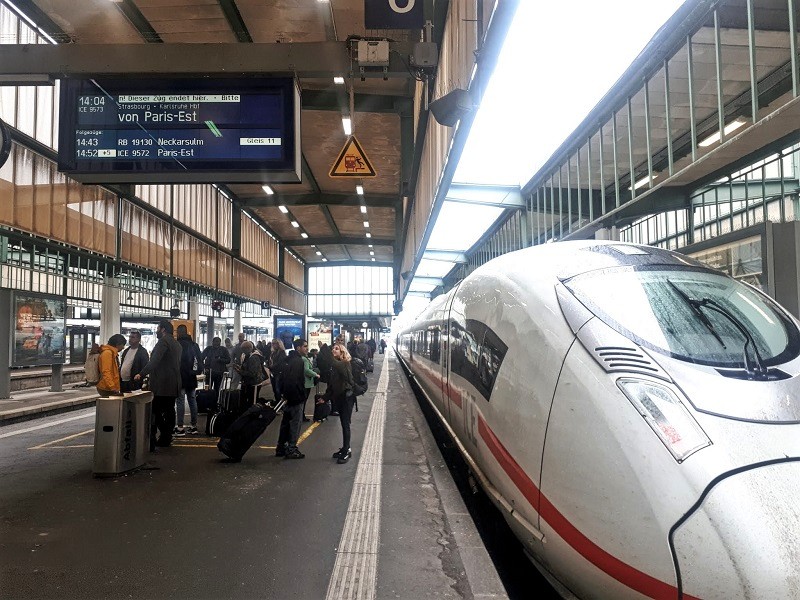
Interrail and Eurail in Hungary
You can travel across the Hungarian railway network with an Interrail or Eurail Global Pass, whether on trains operated by MÁV or GYSEV.
However, don’t forget that seat reservations are compulsory for Railjet Express (RJX), EuroCity (EC), and InterCity (IC) trains when travelling on a domestic route in Hungary (for international routes, seat reservations are optional, though highly recommended).
It’s worth noting that many Hungarian long-distance trains have both InterCity (IC) coaches with compulsory seating and Gyorsvonat (Gy) coaches with unreserved seating, and the latter can be freely used by Interrail or Eurail passholders without the need to make a reservation.
You can make a seat reservation at a ticket office at a Hungarian railway station or through the MÁV website.
Simply click on “passengers and discounts” in the search box, then select “add discount” and choose the “international pass, ticket, or global price” discount option.
If you now search for your train route, you’ll find that you only need to pay the seat reservation fee for your domestic Hungarian train journey, which is 650 HUF (€1.60) for 2nd class and 1,990 HUF (€4.80) for 1st class.
When you want to make a seat reservation for an international journey on the MÁV website, you must select “Interrail/Eurail/Pass” from the list of discount options.
However, apart from paying the supplement for couchettes and sleepers on its own night trains, the MÁV website does not work particularly well for seat reservations on international trains.
For many journeys, such as those to Romania, you have no choice but to make a seat reservation at the station.
However, for some routes, you can reserve a seat on the websites of other railway companies, with ÖBB working well for Budapest-Vienna trains and onward connections into Germany or Switzerland, and ČD allowing seat reservations on trains from Hungary to Slovakia, the Czech Republic, and Poland.
Although an Interrail or Eurail Global Pass can be a great deal if you plan to travel by train across multiple countries in Europe, it offers little value if you primarily want to travel within Hungary, as normal point-to-point fares in the country are low.
International train ticket prices between Hungary and its neighbouring countries can also be low when booked in advance, so if you have an Interrail or Eurail flexi pass with a certain number of free travel days within a month, it’s generally not a great idea to use a day for train travel within Hungary.
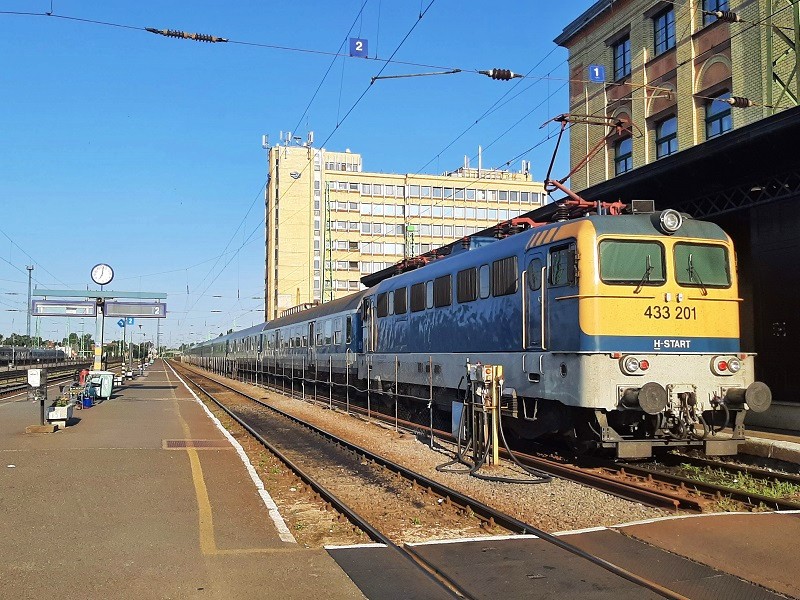
Scenic railway lines in Hungary
Being dominated by the Pannonian plain, most of Hungary is as flat as a pancake, meaning that the vast majority of train rides across the country won’t be particularly exciting.
When you traverse Hungary, expect to see plenty of grassland and agricultural fields from the train window, along with the occasional village or town.
However, two main railway lines in Hungary offer rather beautiful views from the window, although they can’t compare to some of Europe’s most stunning railway routes and likely aren’t worth riding solely for the scenery.
The Budapest-Szob railway line, which connects the Hungarian capital to the Slovakian border and is used by trains to Bratislava and Prague, runs alongside the Danube and offers scenic views of the river and sights such as Visegrád Castle.
The main line between Székesfehérvár and Keszthely along the southern shore of Lake Balaton is also quite scenic, although the secondary railway line hugging the more hilly northern shore offers even more beautiful views.
Other scenic railway lines in Hungary include the Győr-Veszprém line and the Eger-Szilvásvárad line, both of which take you through forests and hilly terrain.

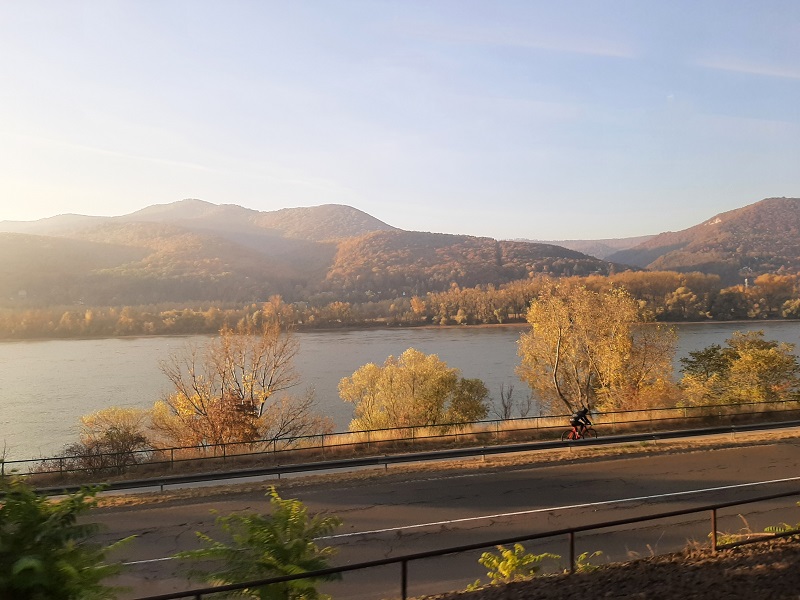
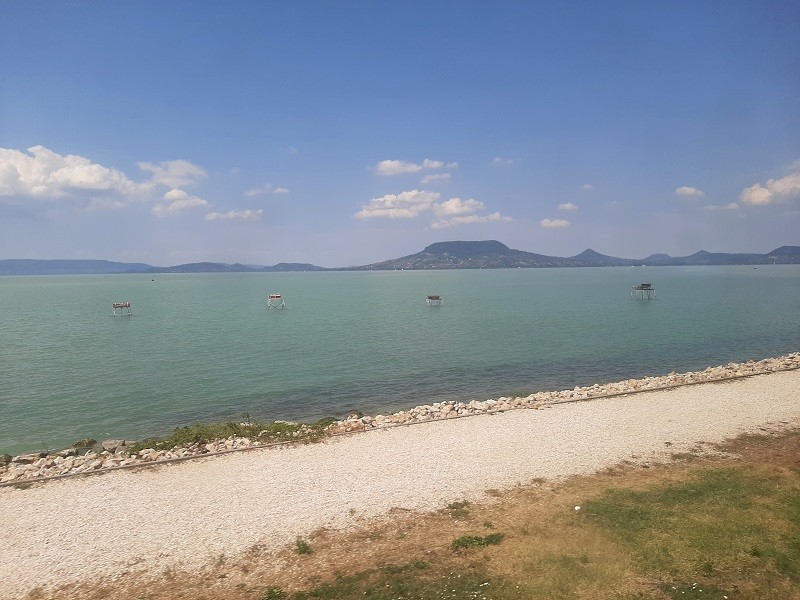
Hungarian railway stations
For a country known for its beautiful architecture, it comes as no surprise that Hungary also boasts some of Europe’s most stunning railway stations.
Many railway stations in Hungary were built during the Austro-Hungarian Empire, and those Habsburg-era architects clearly understood that stations shouldn’t just be functional, but should radiate a certain charm and grandeur, serving as gateways to cities.
Nowhere is this more evident than at the magnificent railway cathedral of Budapest Keleti pályaudvar, which simply means “eastern railway station” in Hungarian.
Budapest Keleti, with its magnificent eclectic façade and stunning train shed, must be one of Europe’s most beautiful railway stations, and if you arrive here for the first time, the surroundings will certainly take your breath away.
Budapest Nyugati pályaudvar (western railway station), built by the Gustave Eiffel Company, also features a magnificent train shed, with abundant light streaming through its glass windows.
In contrast, the third major Budapest railway terminus, Déli pályaudvar (southern railway station), is far less impressive, as it was constructed by the communists with a purely functional design dominated by concrete.
When taking a train from Budapest, make sure to check whether it departs from Keleti, Nyugati, or Déli station.
As a general rule, trains to Austria, southern Germany (Munich and Stuttgart), Switzerland, Romania, Serbia, and Ukraine depart from Budapest Keleti station, while trains to Slovakia, the Czech Republic, Poland, and northern Germany (Berlin and Hamburg) depart from Nyugati.
Trains from Budapest to Croatia and Slovenia may depart from either Keleti or Déli station, depending on the specific departure.
Outside Budapest, major Hungarian cities like Pécs, Szombathely, and Szeged, as well as important railway junctions such as Püspökladány, often feature those typical Habsburg-era station buildings from the turn of the century.
Other Hungarian railway stations, particularly those in Debrecen (built in the late 1950s/early 1960s) and Szolnok (from the 1970s), showcase modern designs popular in communist countries during those periods.
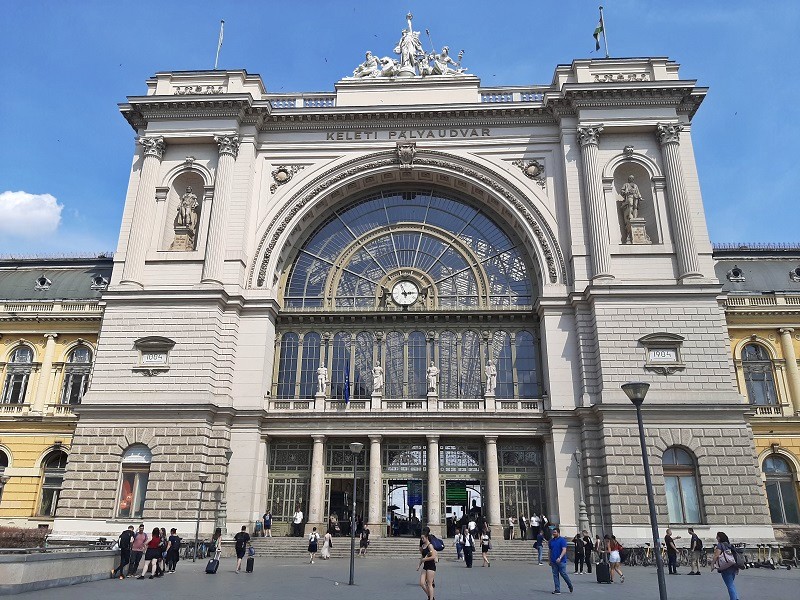
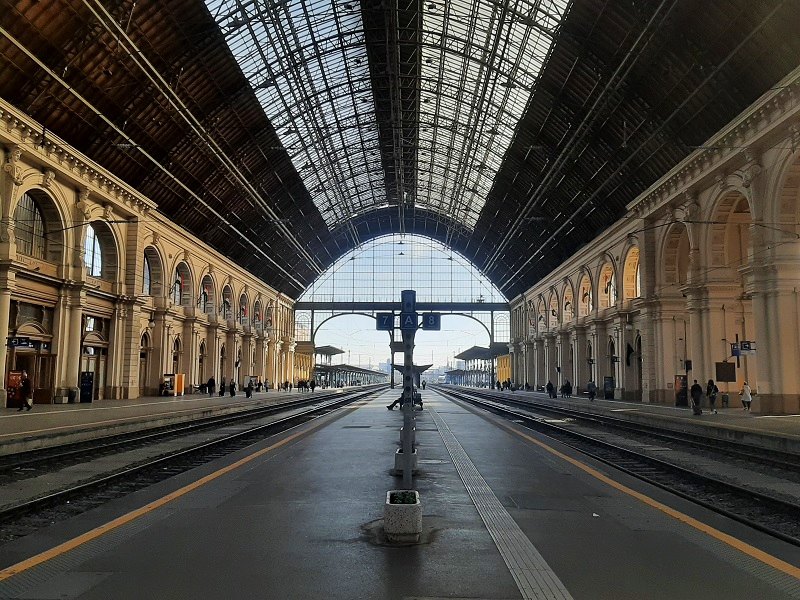
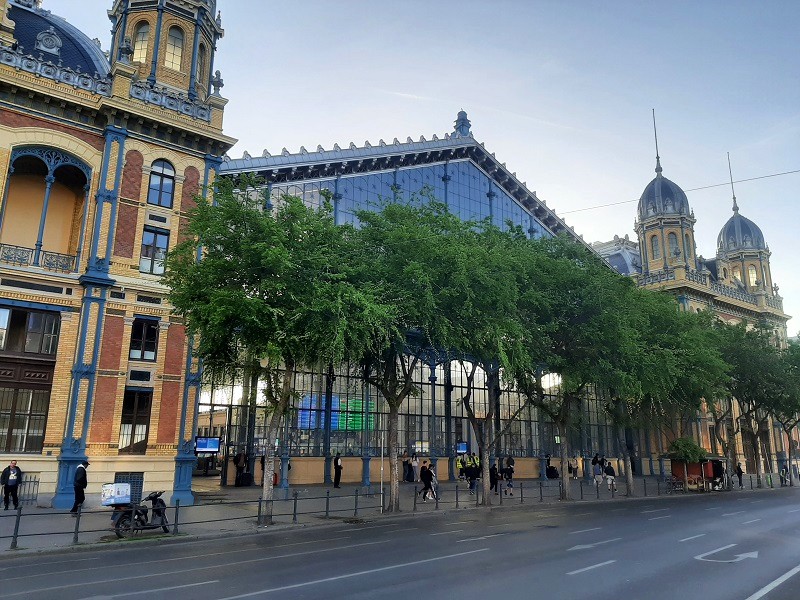
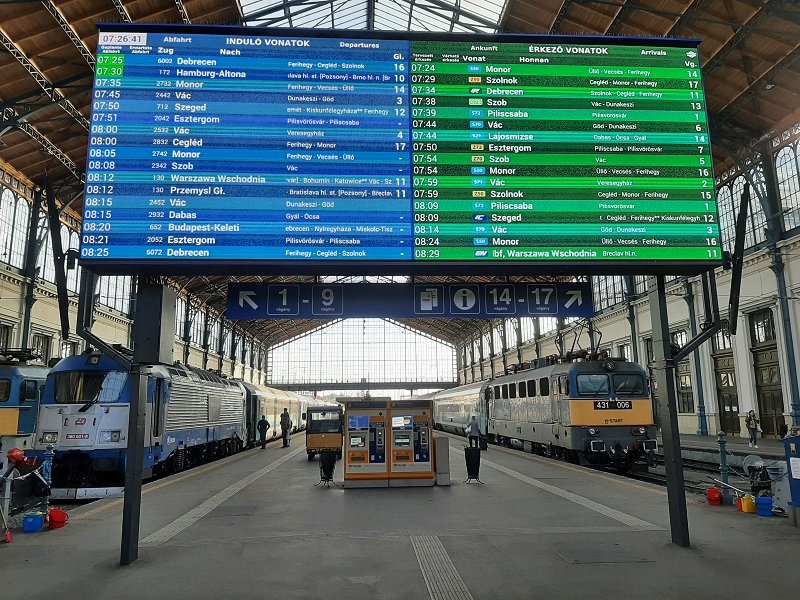

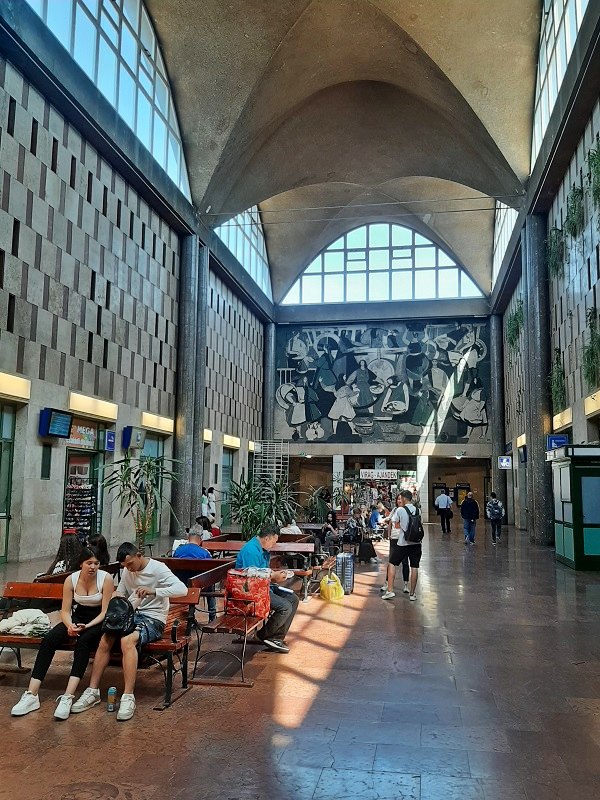
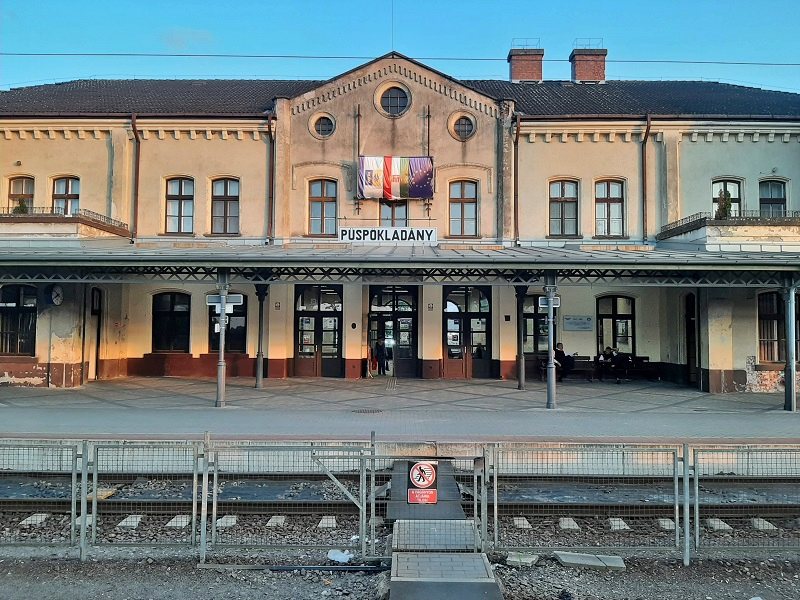
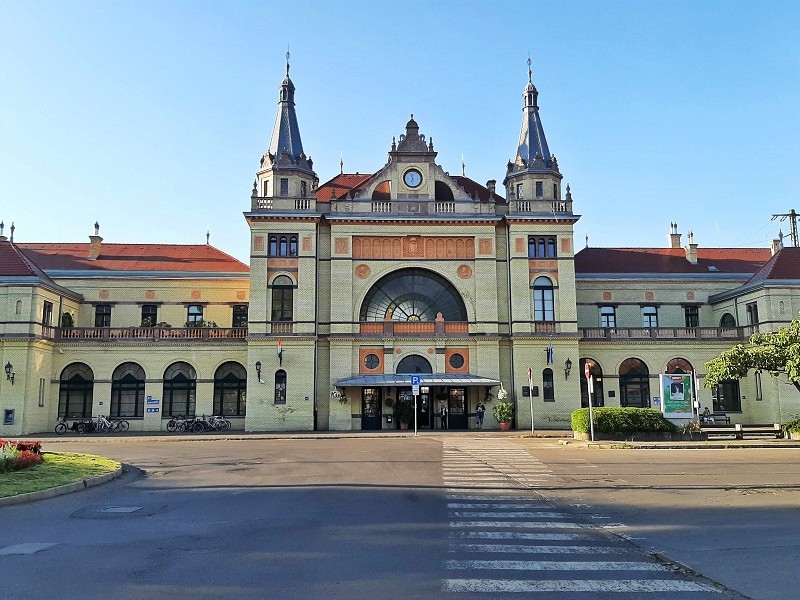
Facilities at railway stations
At the most important Hungarian railway stations, you can always expect to find ticket offices, toilets, a few small shops and bakeries to stock up on supplies for your train journey, as well as either luggage lockers or an attended baggage storage room.
The MÁV website features a handy station search tool where you can enter a station name and see what facilities it offers.
It’s in Hungarian only, but using Google Translate, it should be easy enough to navigate.
Some Hungarian railway stations also feature a café or bar, such as Szombathely railway station, which even has seats and tables on the platform, allowing you to enjoy a beer while watching the trains depart.
Another worthy mention is the McDonald’s and McCafé at Budapest Nyugati, which wouldn’t normally warrant a recommendation — especially not for the food — but its location inside a magnificent old hall of the station building makes it stand out.
Sadly, the station restaurant at Budapest Keleti has been closed for many years, so for good bars and restaurants near this or any other station in Hungary, it’s best to check Google Maps for nearby options that might appeal to you.
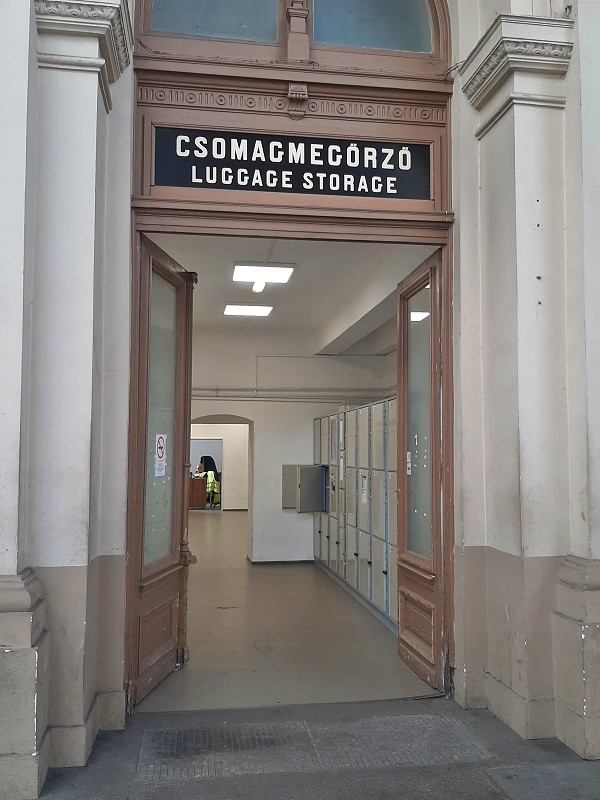
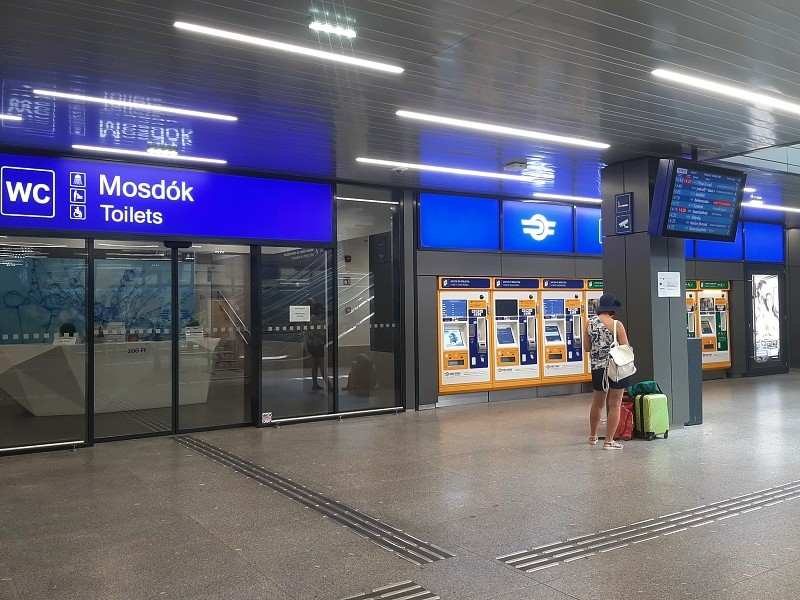
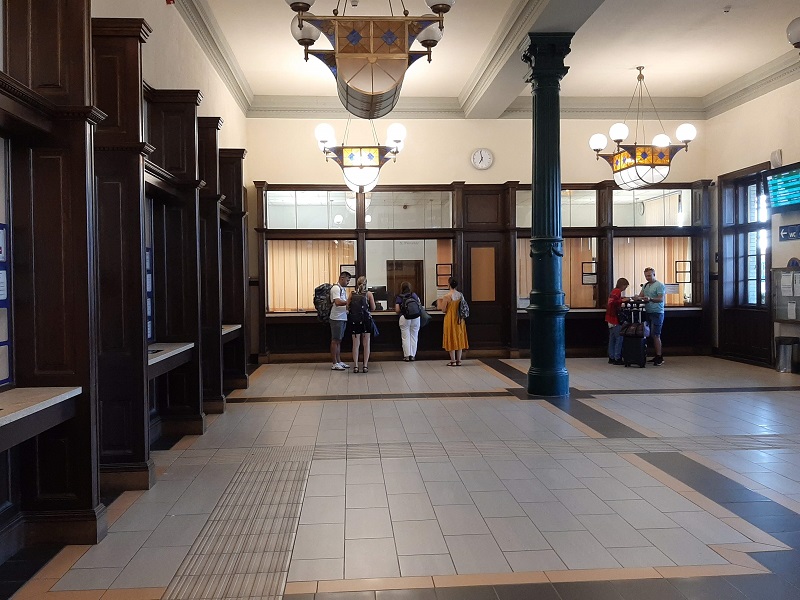
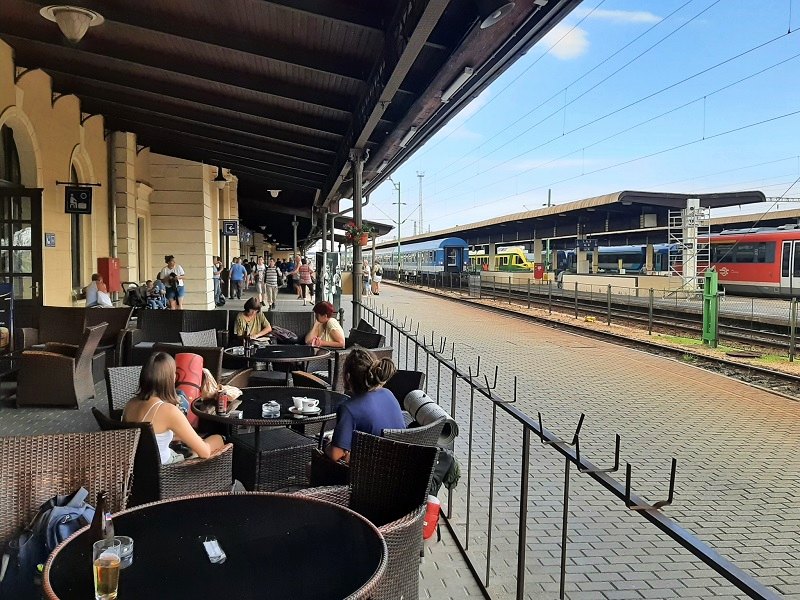
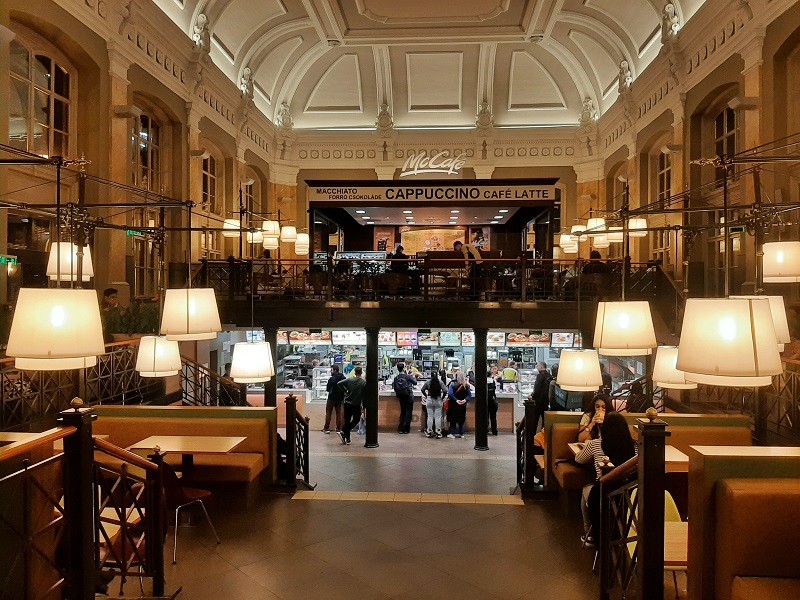
MÁV Business Lounge
At Budapest Keleti station, MÁV operates a business lounge that passengers can access with the appropriate ticket.
Inside the lounge, you’ll find a quiet environment and comfortable seating to relax while awaiting your train departure, with facilities such as Wi-Fi, power sockets, and toilets available.
The MÁV Business Lounge also offers complimentary barista-made coffee, soft drinks, and basic snacks such as sandwiches, nuts, and chocolates, with alcohol available for an additional charge.
Passengers with a first-class Interrail or Eurail Pass, or those holding a first-class international train ticket, get complimentary access to the MÁV Business Class Lounge.
Passengers booked in a sleeper compartment on a night train also get access to the MÁV Business Lounge, regardless of whether your actual ticket is for first or second class.
If you have a premium first class ticket on a domestic Hungarian IC+ train, you can also access the lounge at Budapest Keleti station.
If you don’t have complimentary access, you can also buy entry to the MÁV Business Lounge for 2,990 HUF (€7.25).
Access is limited to two hours before your train departure or immediately after your train arrives at Budapest Keleti.
The MÁV Business Lounge is located on platform 9 at Budapest Keleti station and is open from 6am until 8.30pm.
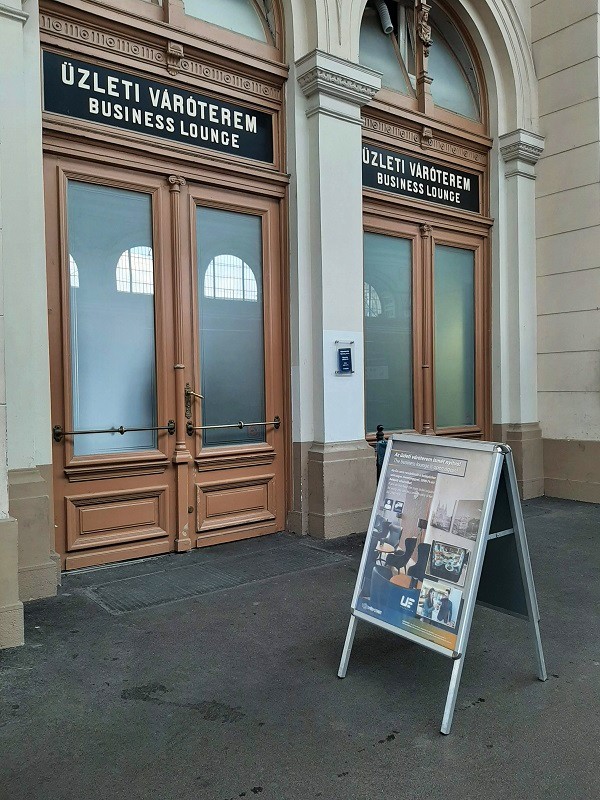
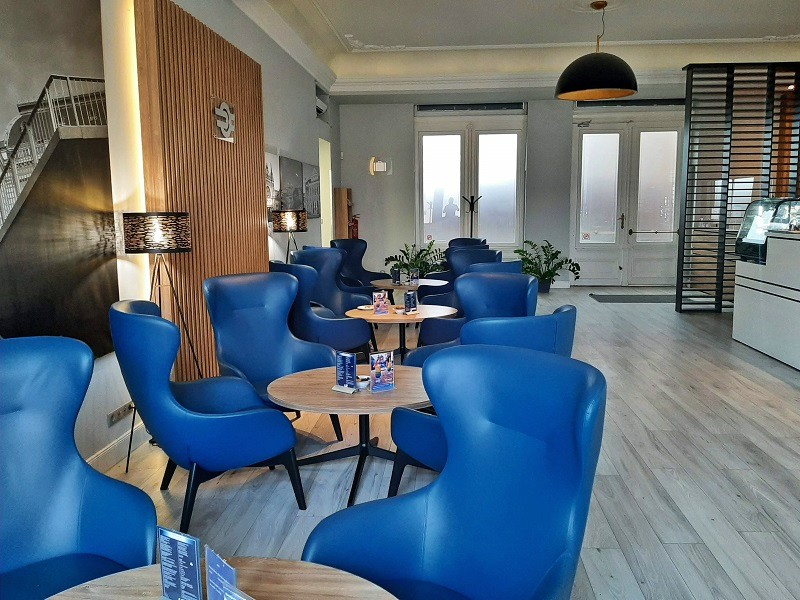
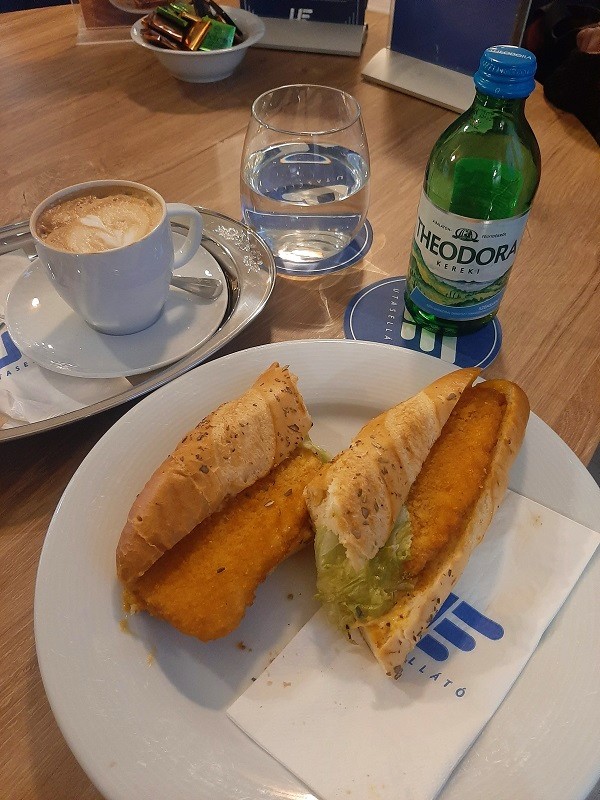
Hungarian train travel tips
Although Hungarian trains generally have a good on-time record, it’s always wise to allow plenty of time if you have a connection to an onward train.
This is especially true when your connection involves a night train.
It’s not uncommon for night trains to pick up delays overnight, particularly those from Romania, so it’s important to leave a large enough buffer upon arrival in the morning to make any onward connection.
The same applies the other way around, as although you might make a 30-minute connection at Budapest Keleti to an onward night train 9 out of 10 times, missing that once-a-day train will significantly impact your travels, leaving you stranded overnight with no other travel options until the next morning.
Always allow plenty of time for important connections and check in advance for alternative options in case you miss a connection, so you’re prepared for any contingencies.
It’s always a good idea to pack something to eat and drink for your journey ahead, even if there should be a dining car on your train according to the railway timetable, as there is always the chance it might not be open or added due to unforeseen circumstances or a defect.
Hungarian trains are usually quite clean, including the toilets, but as a precaution, it’s always a good idea to have some toilet paper with you, especially when travelling on less premium trains in more remote areas of the country.
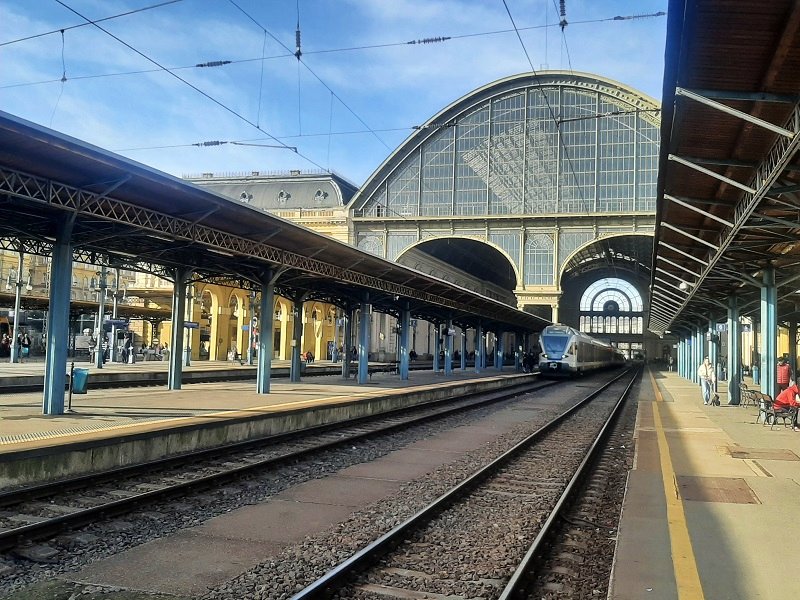
Conclusion
Hungary has an excellent railway network, with frequent and highly affordable trains connecting every major city and town across the country.
The infrastructure and trains on the main railway lines meet modern standards, but once you reach the more remote corners of the country, you’ll find that everything is much older, with journey times being much slower.
MÁV, the Hungarian State Railways, is the main operator of both domestic and international trains in Hungary.
Traveling on MÁV’s premium trains, such as the modern InterCity Plus (IC+) on major domestic routes or the comfortable EuroCity trains with their excellent Hungarian dining cars serving delicious freshly cooked food, is truly a pleasure.
The same is true for MÁV’s night trains, which feature comfortable sleeper and couchette compartments.
Situated in the heart of Europe, it’s no surprise that Hungary is well-connected to its neighbours and European countries beyond, with Budapest serving as one of the continent’s main railway hubs.
If you’re planning extensive train travel across Europe, chances are you’ll find yourself on a train arriving at Budapest Keleti pályaudvar or Budapest Nyugati pályaudvar, both of which rank among Europe’s most beautiful railway stations.
Once you’ve sampled the delights of Hungarian train travel and the beautiful sights across the country, you’ll only want to return and experience more of it!

